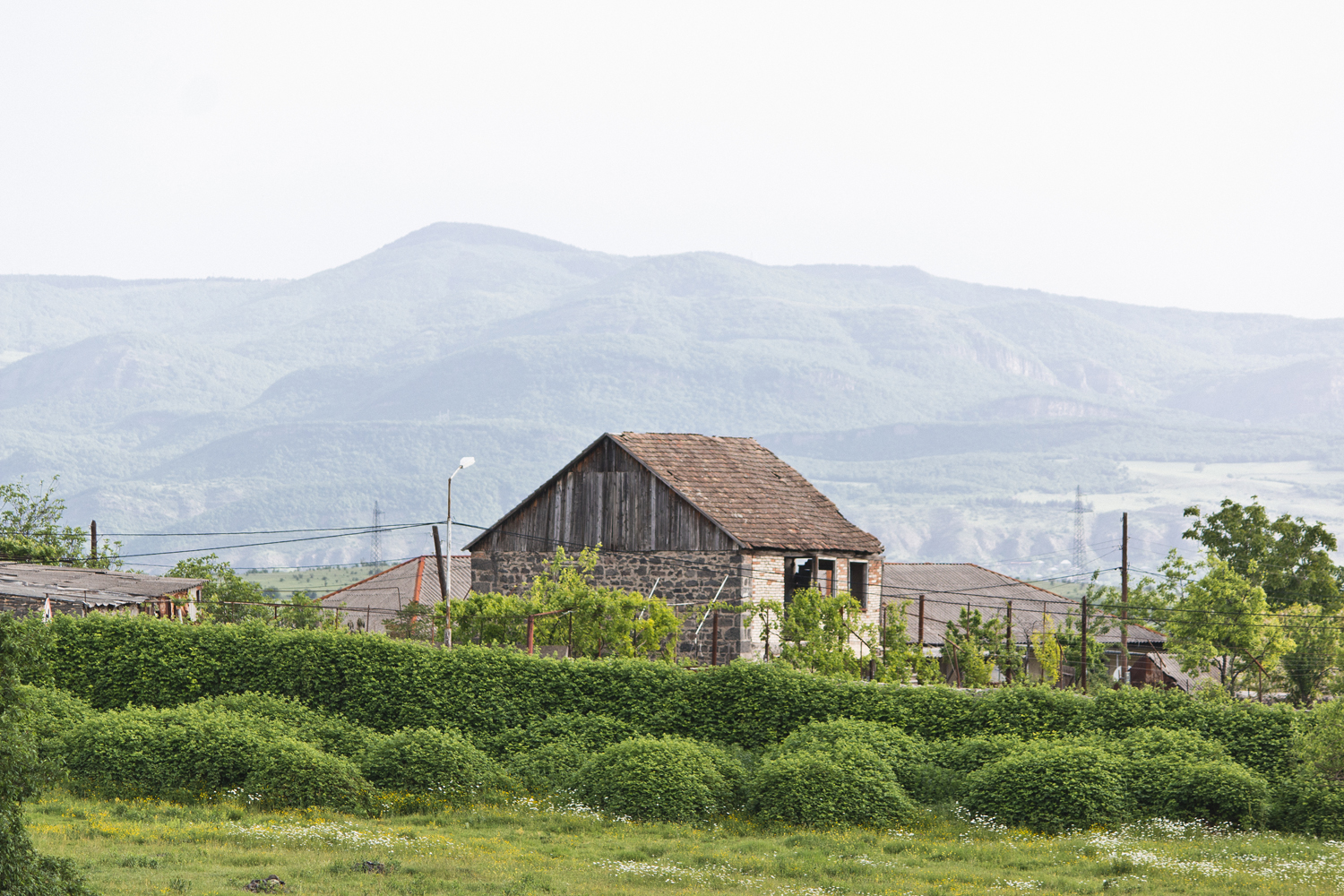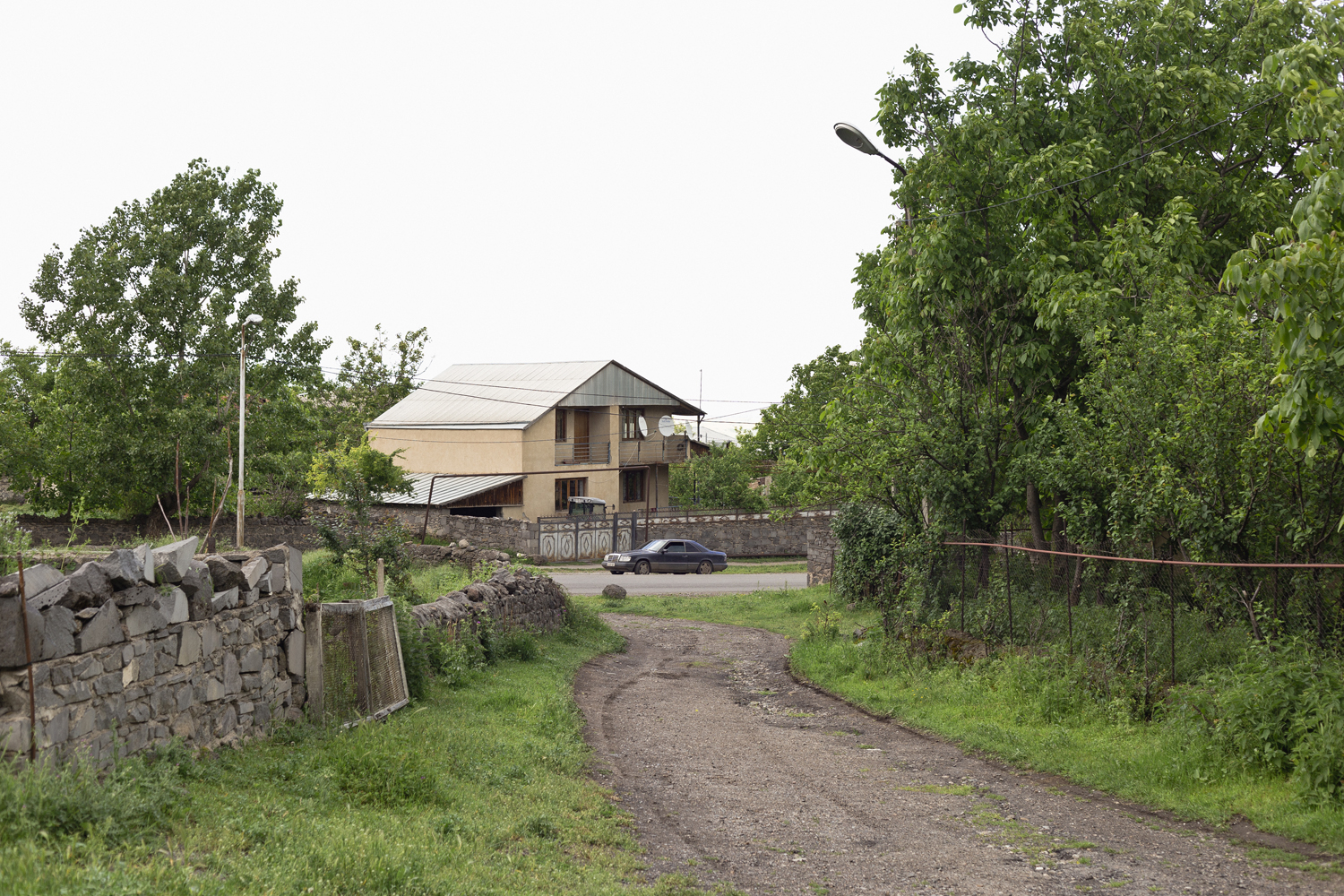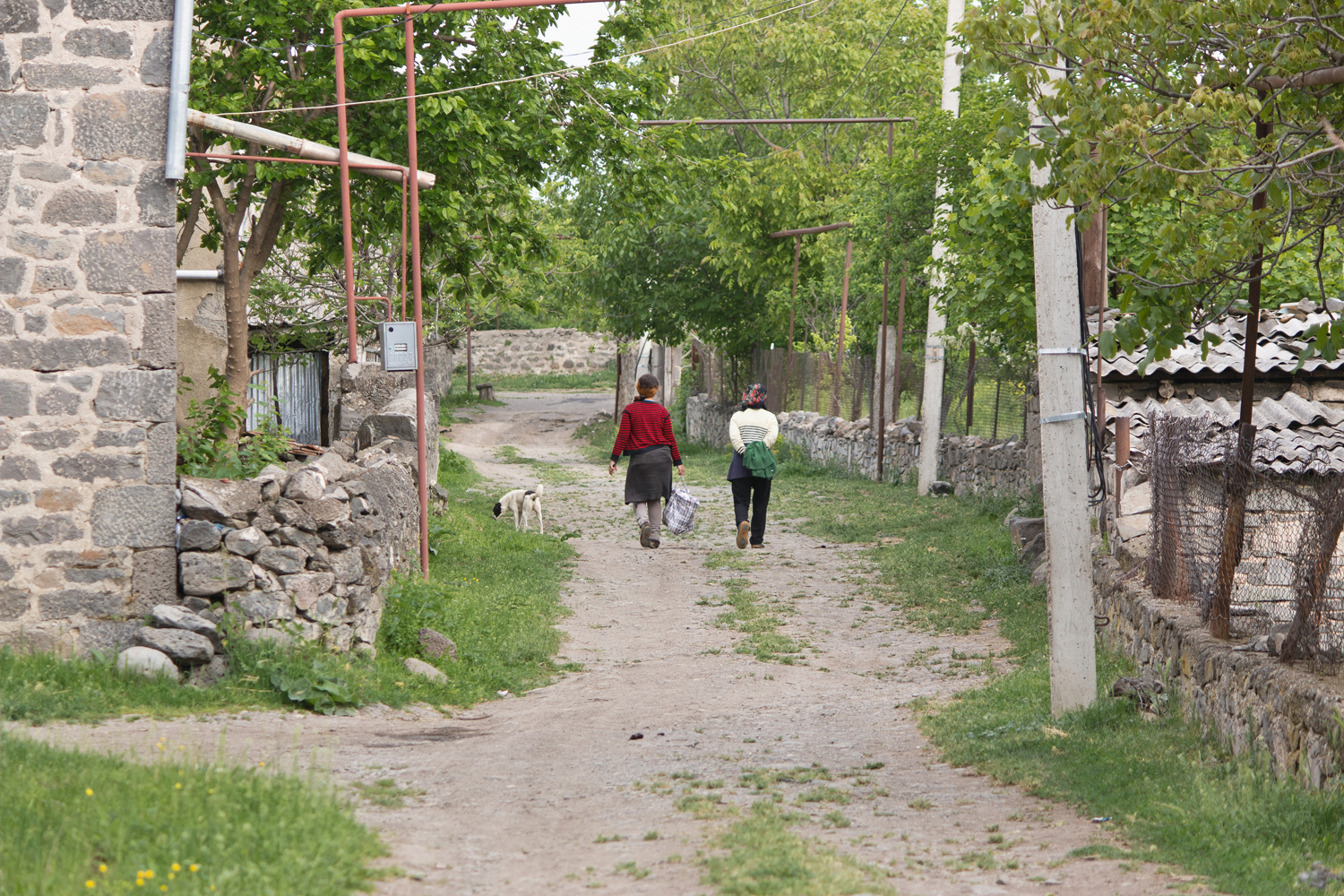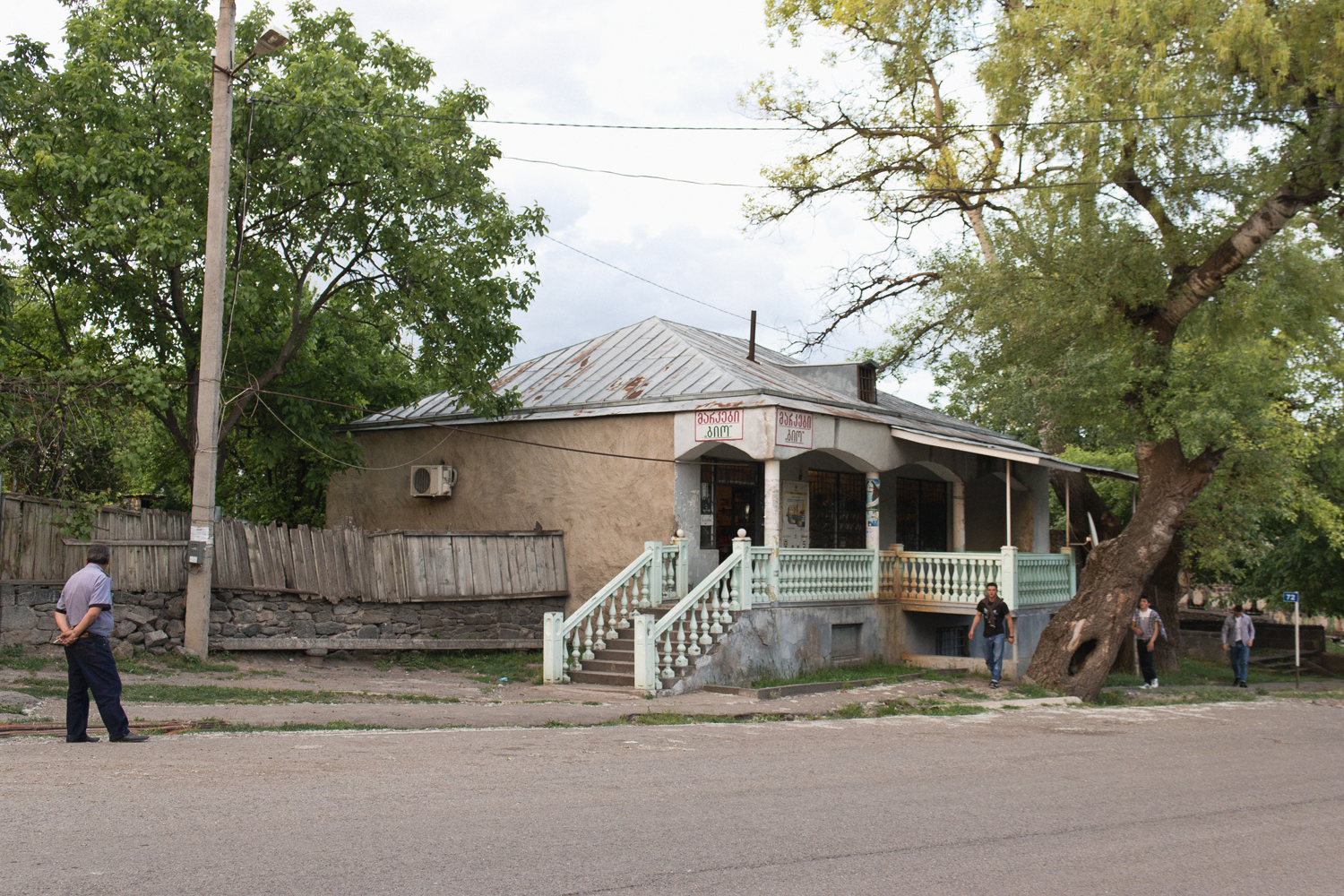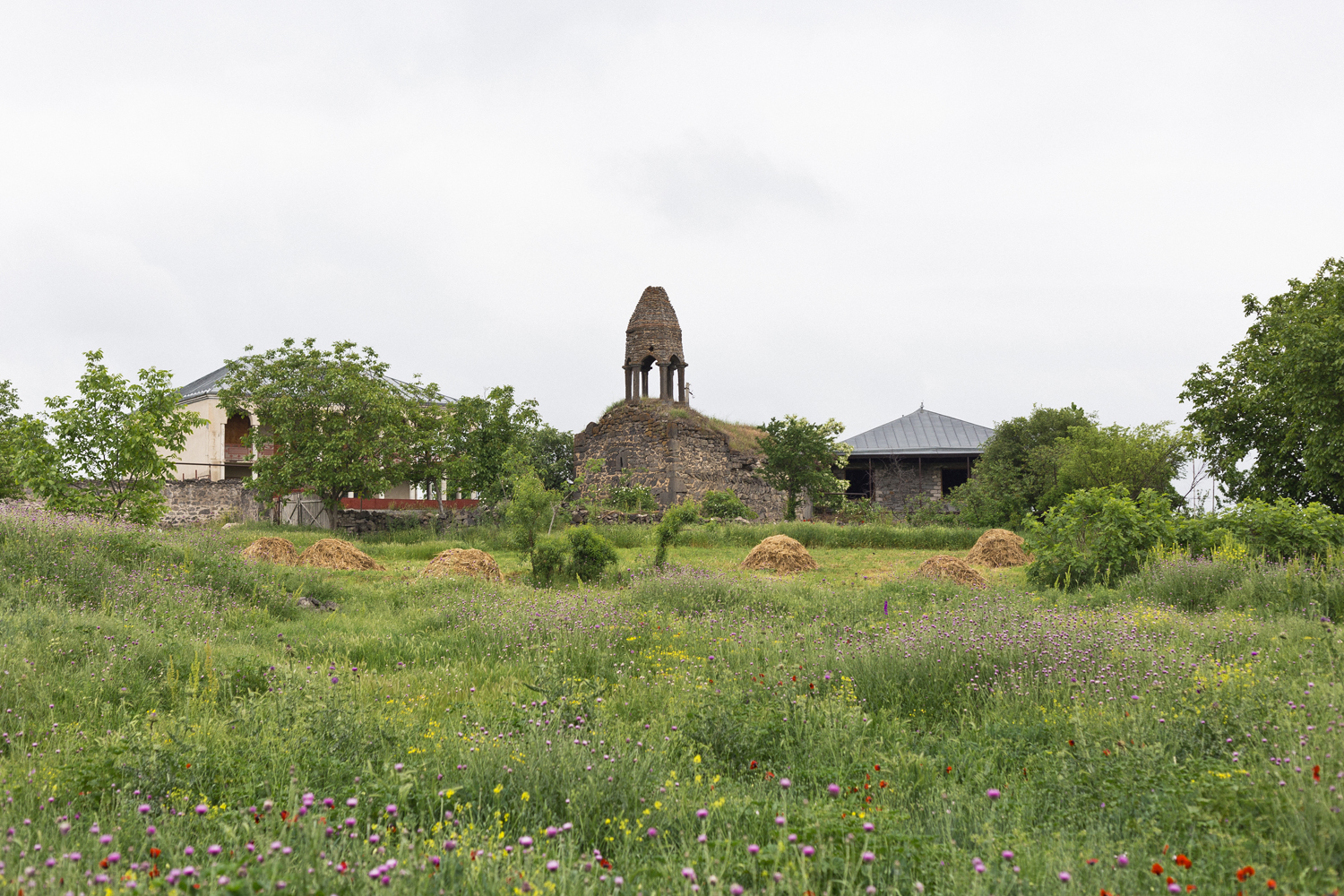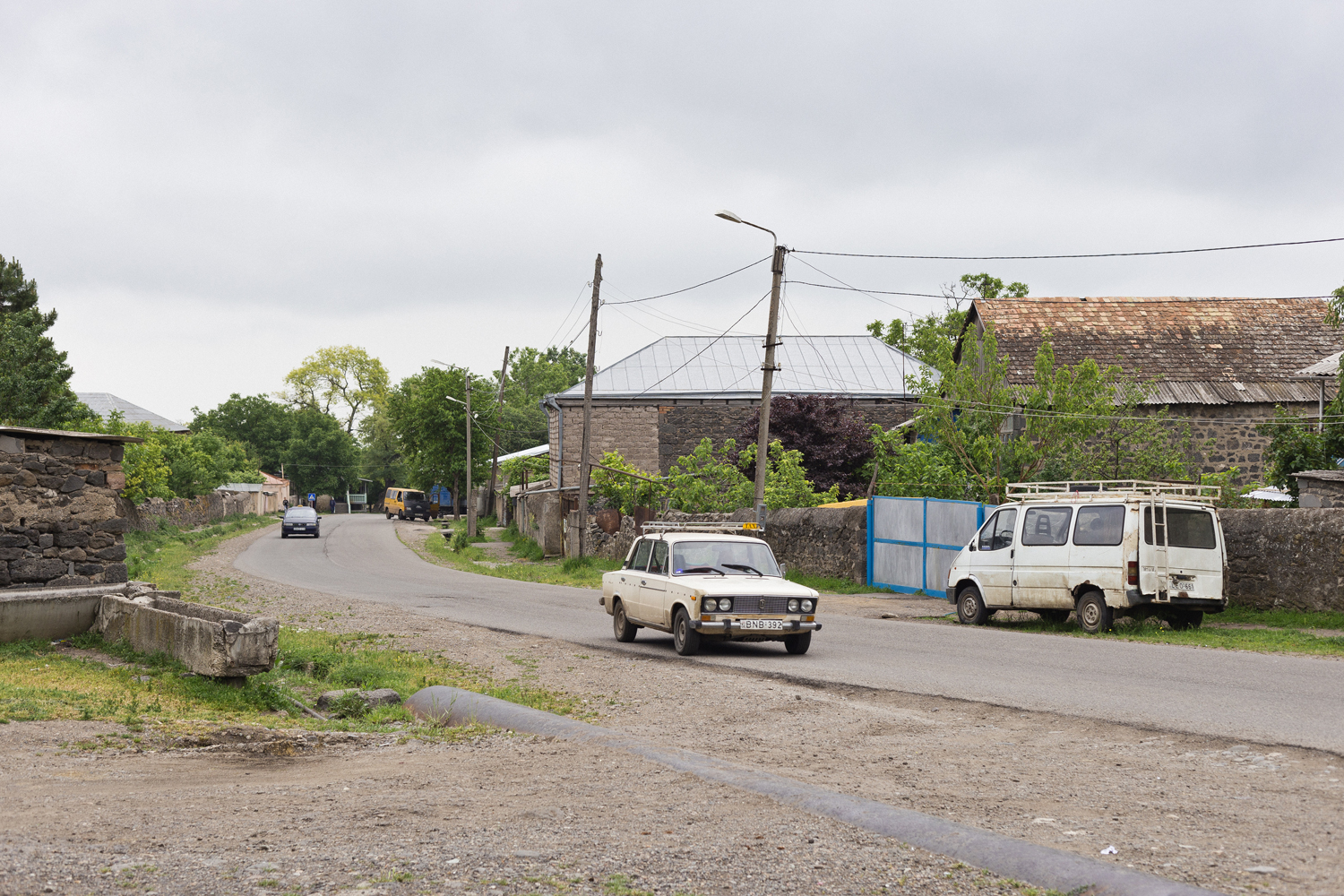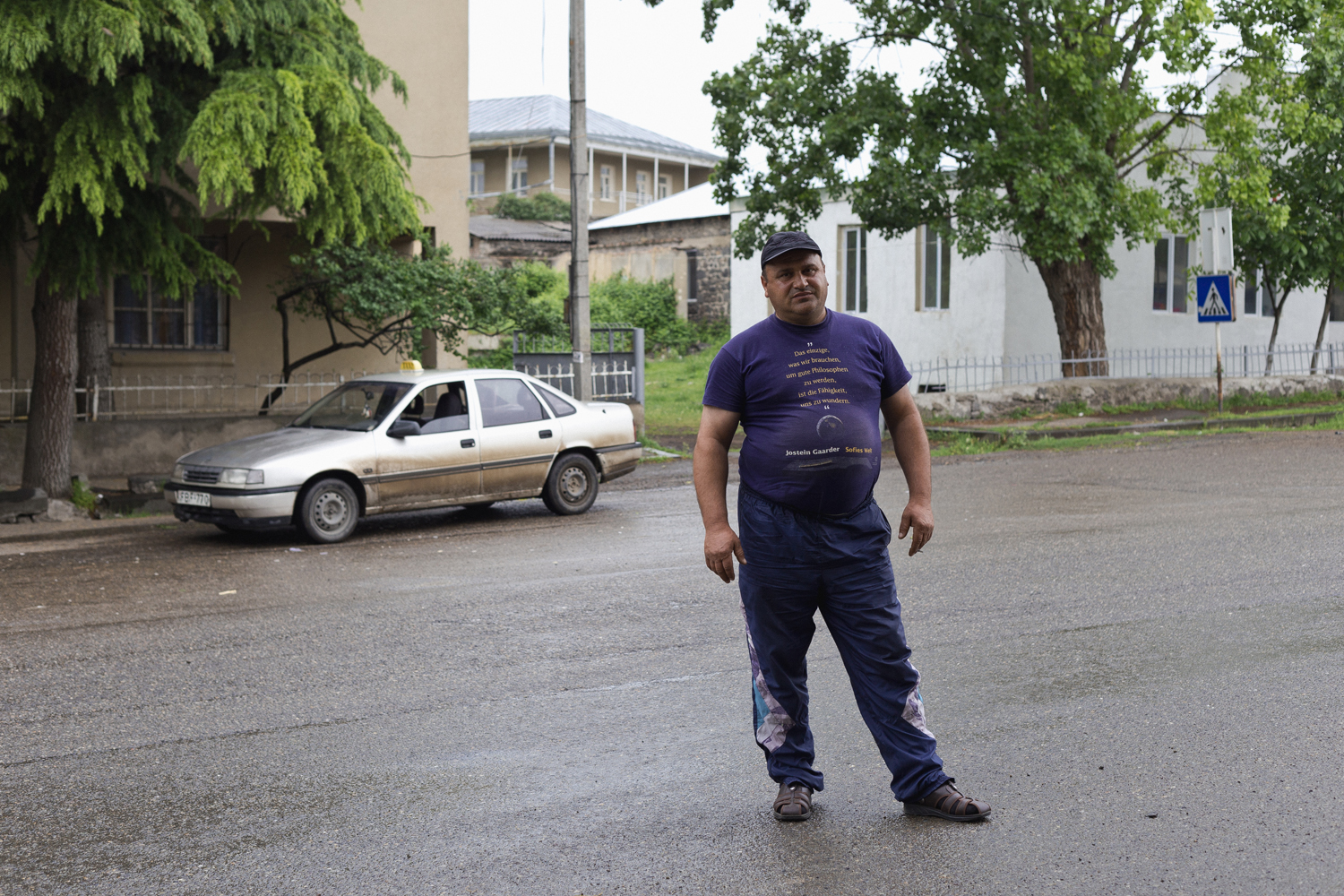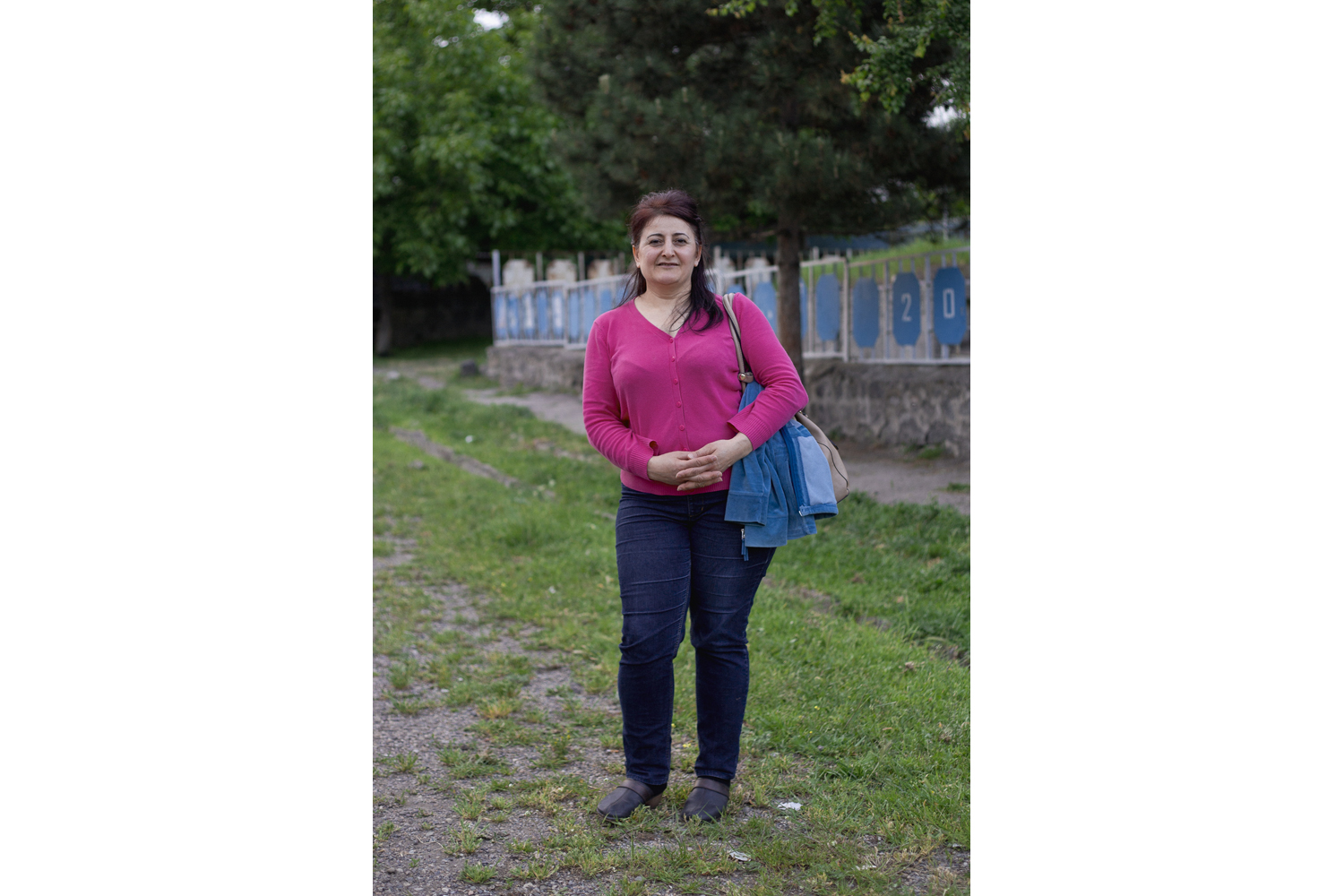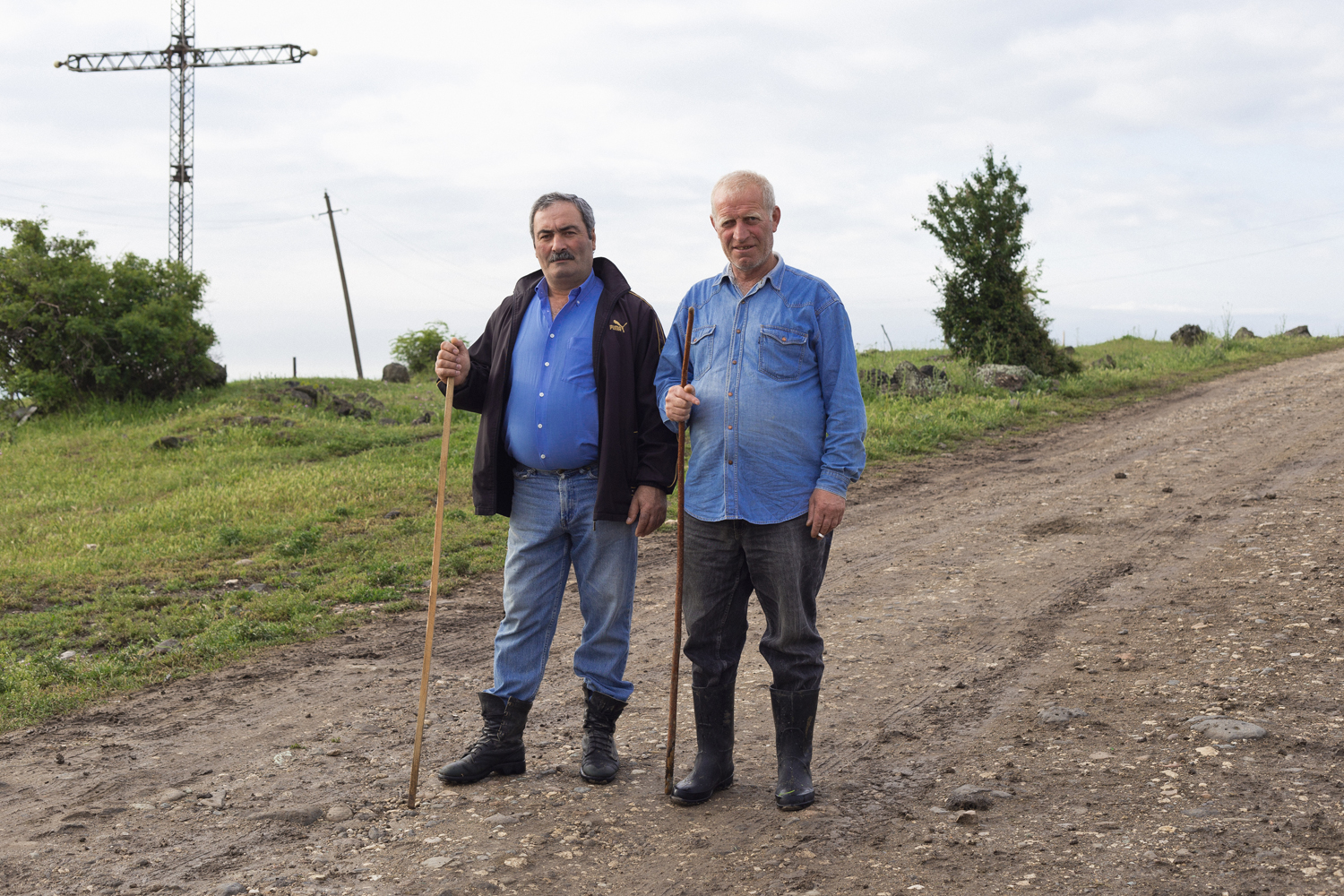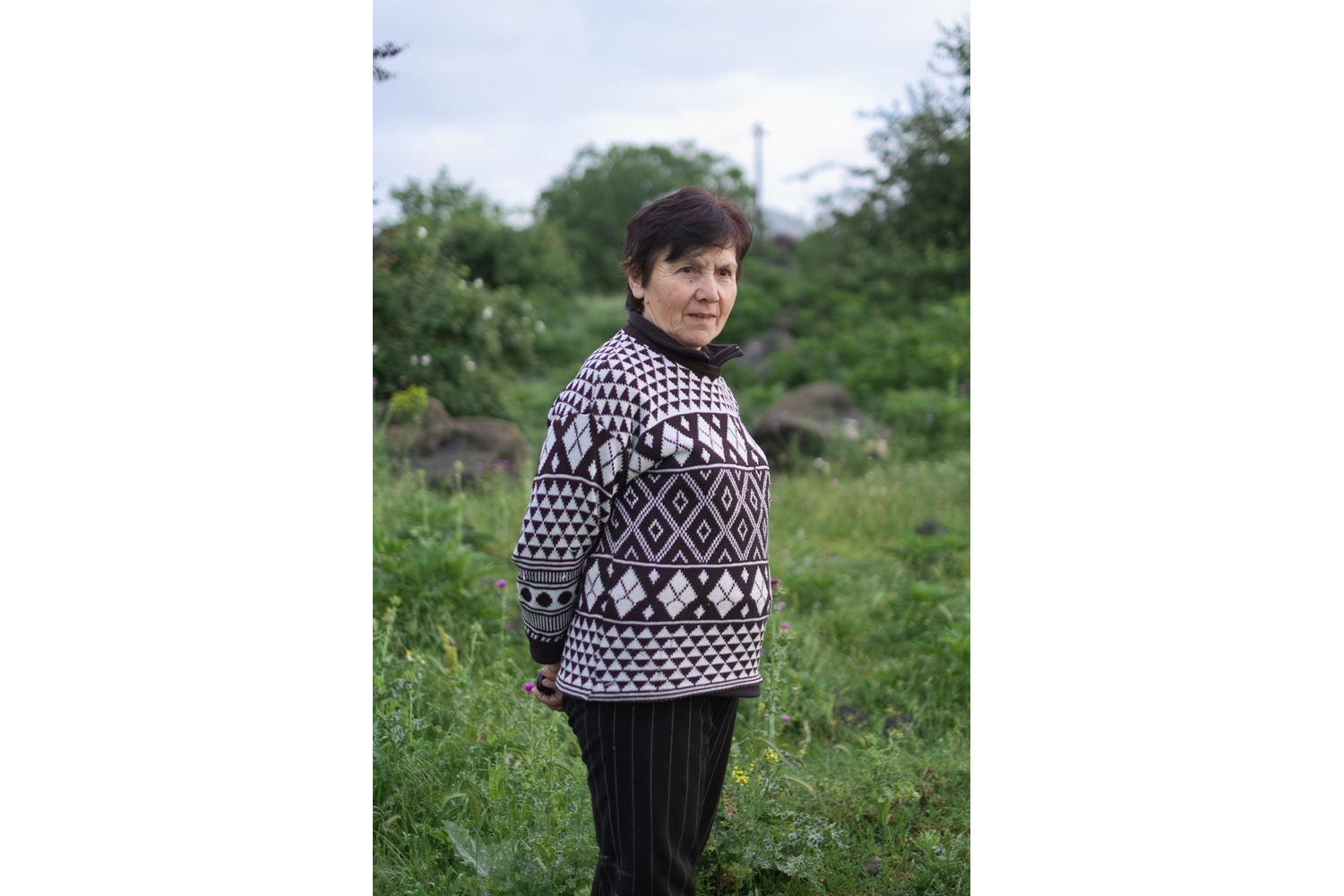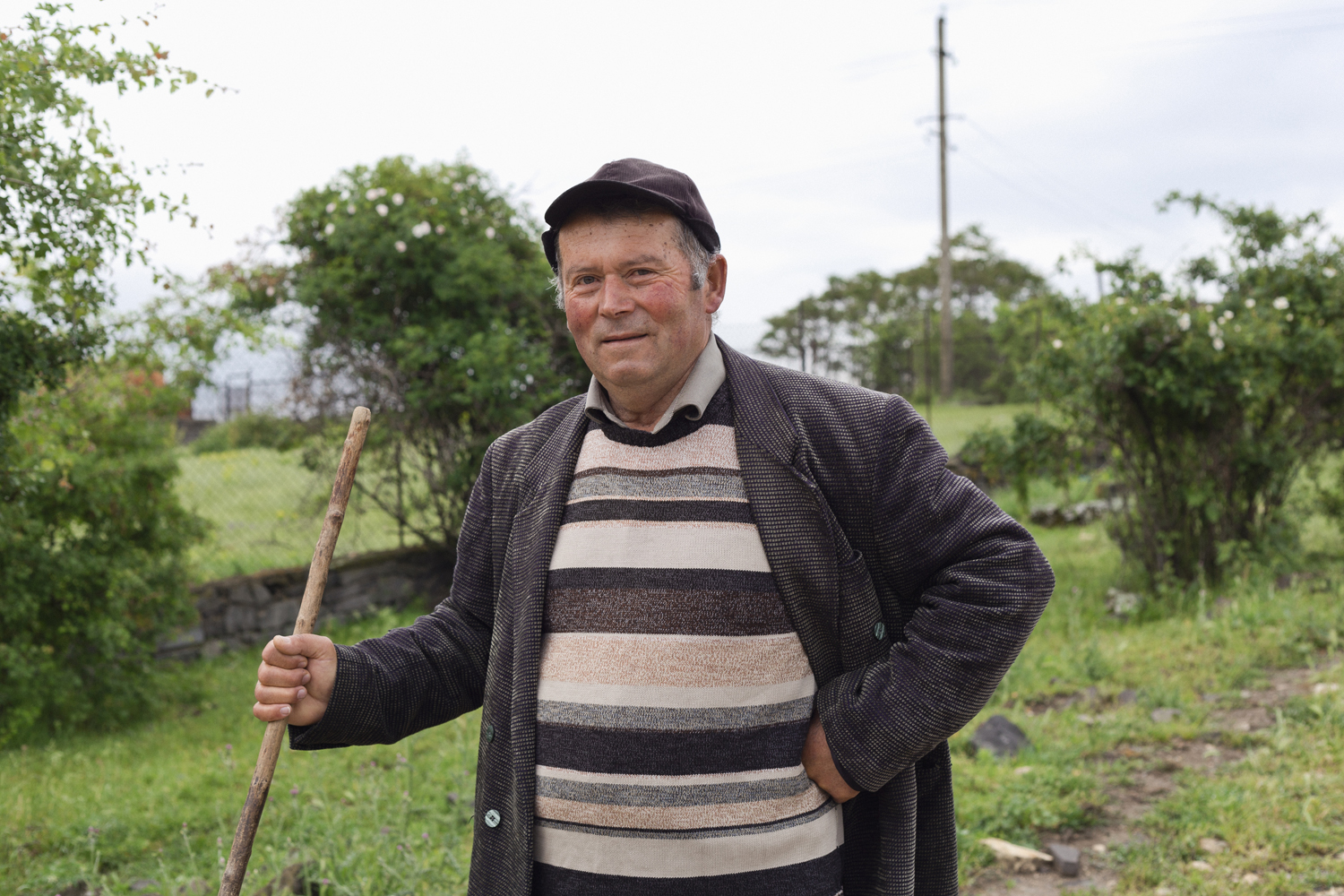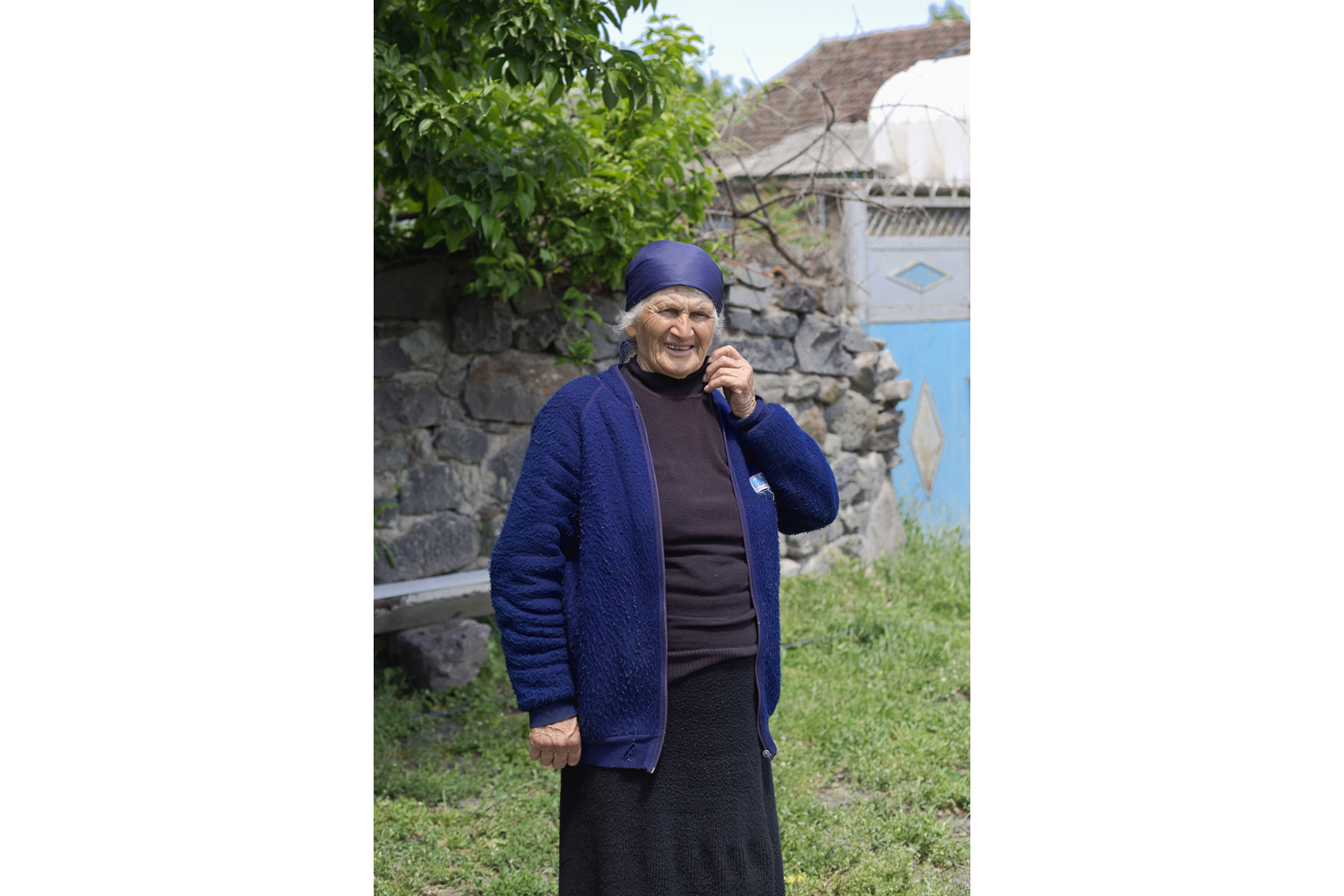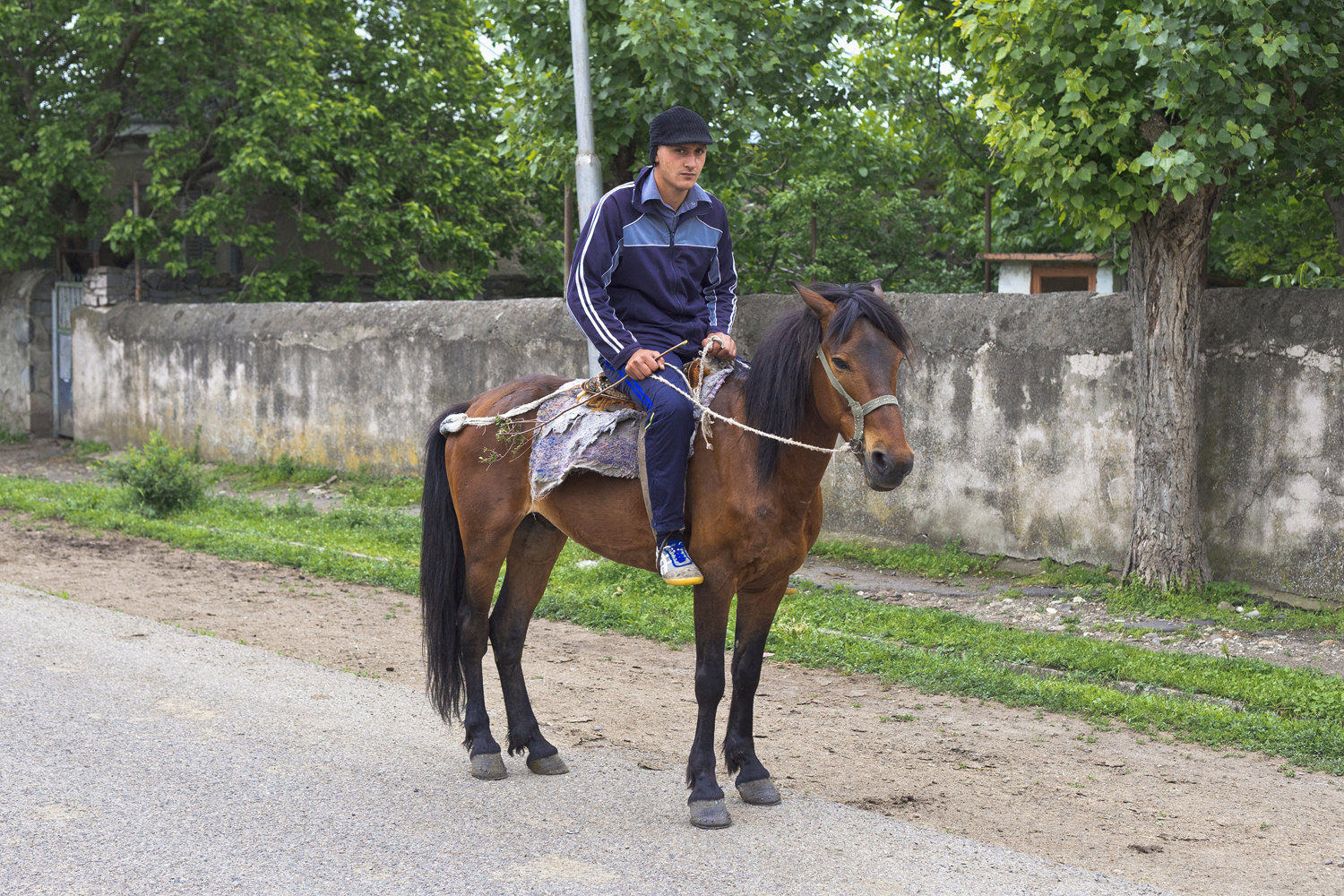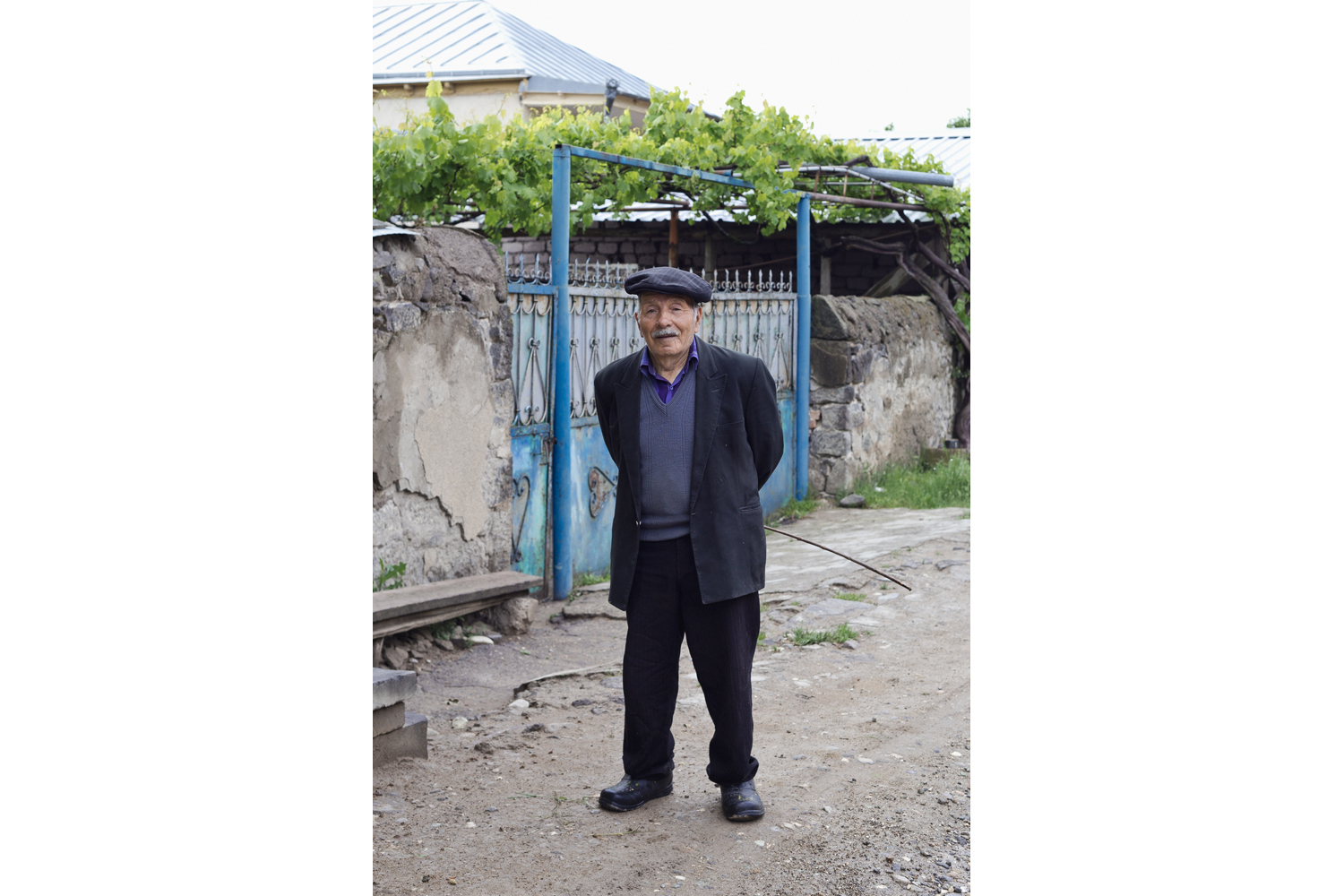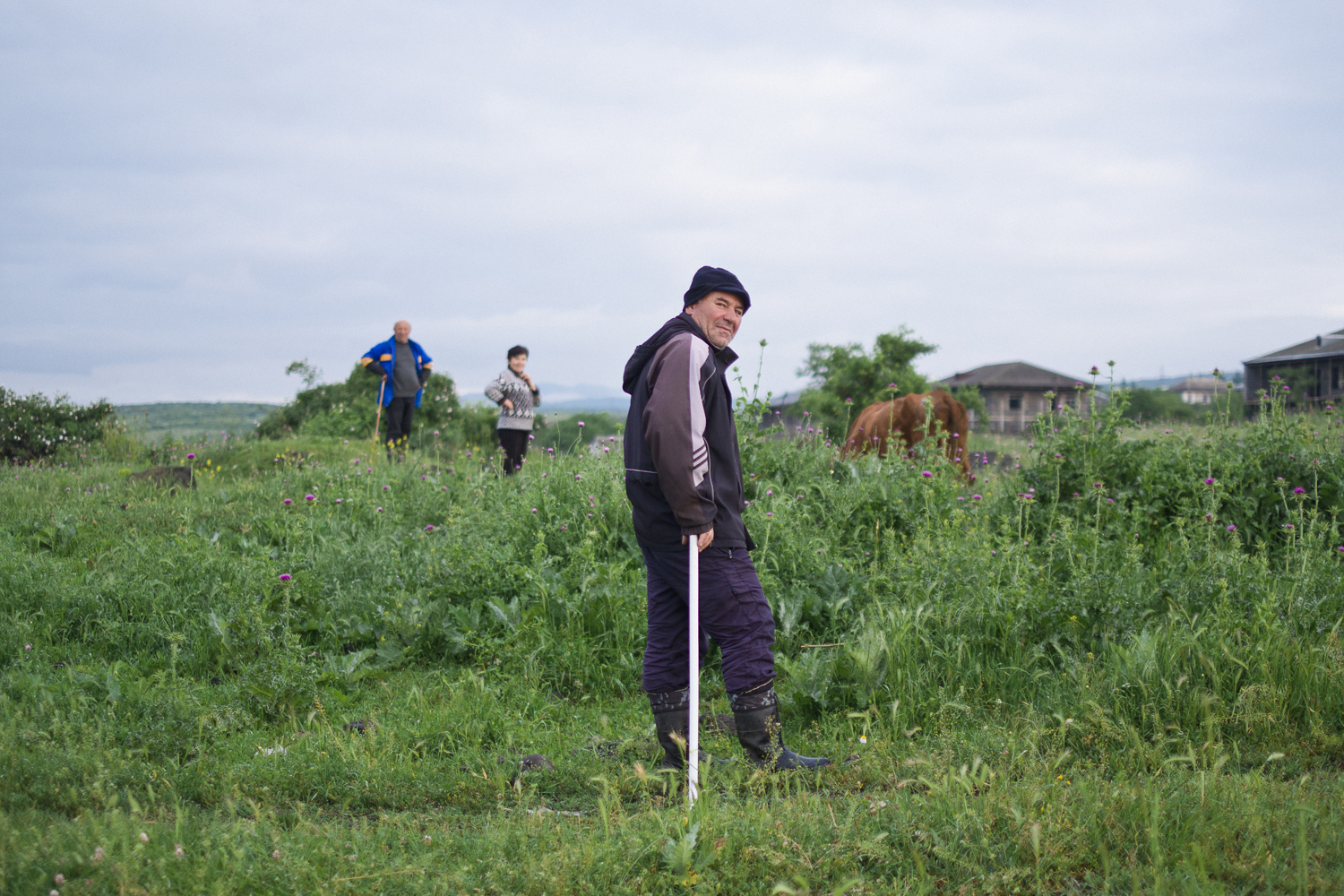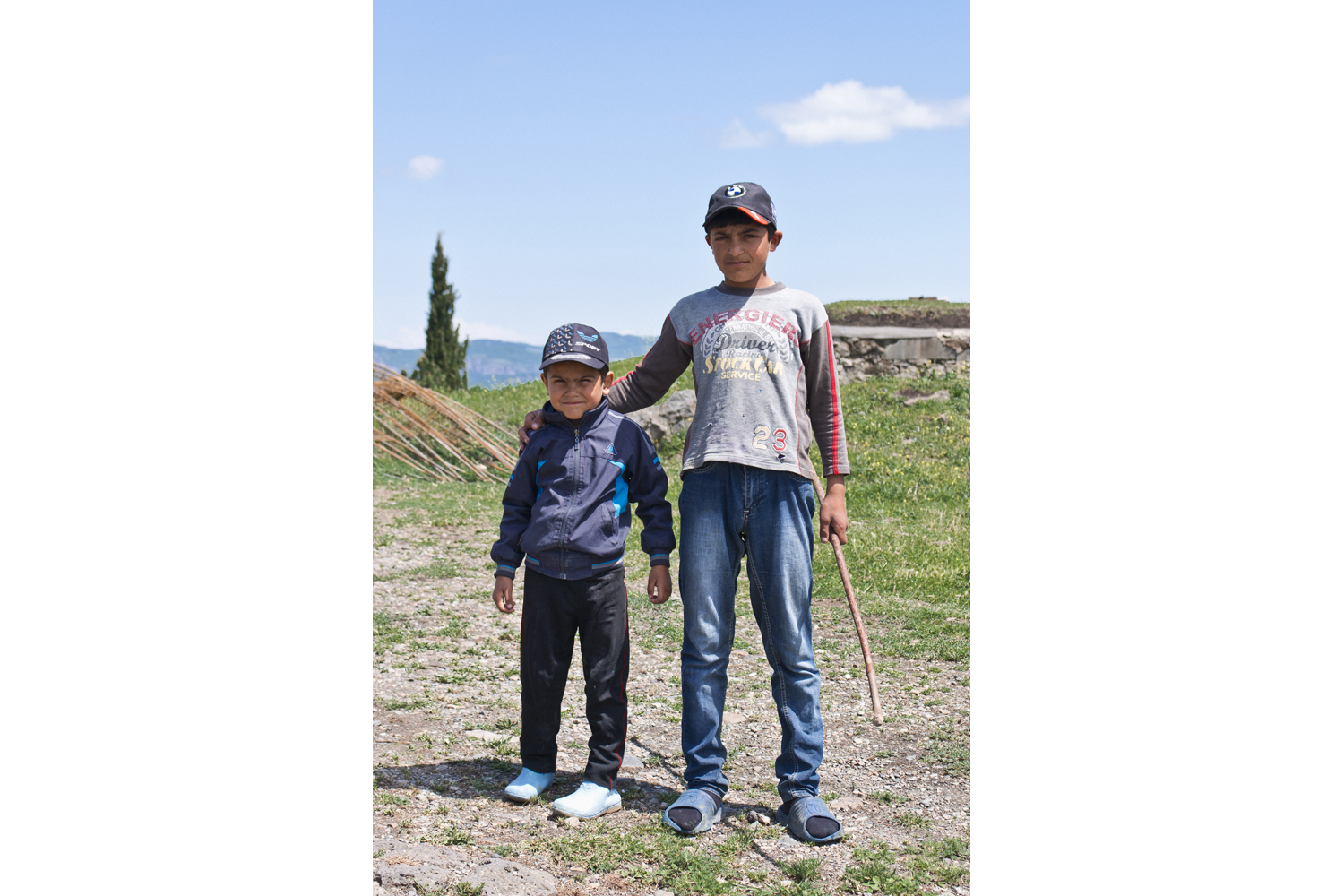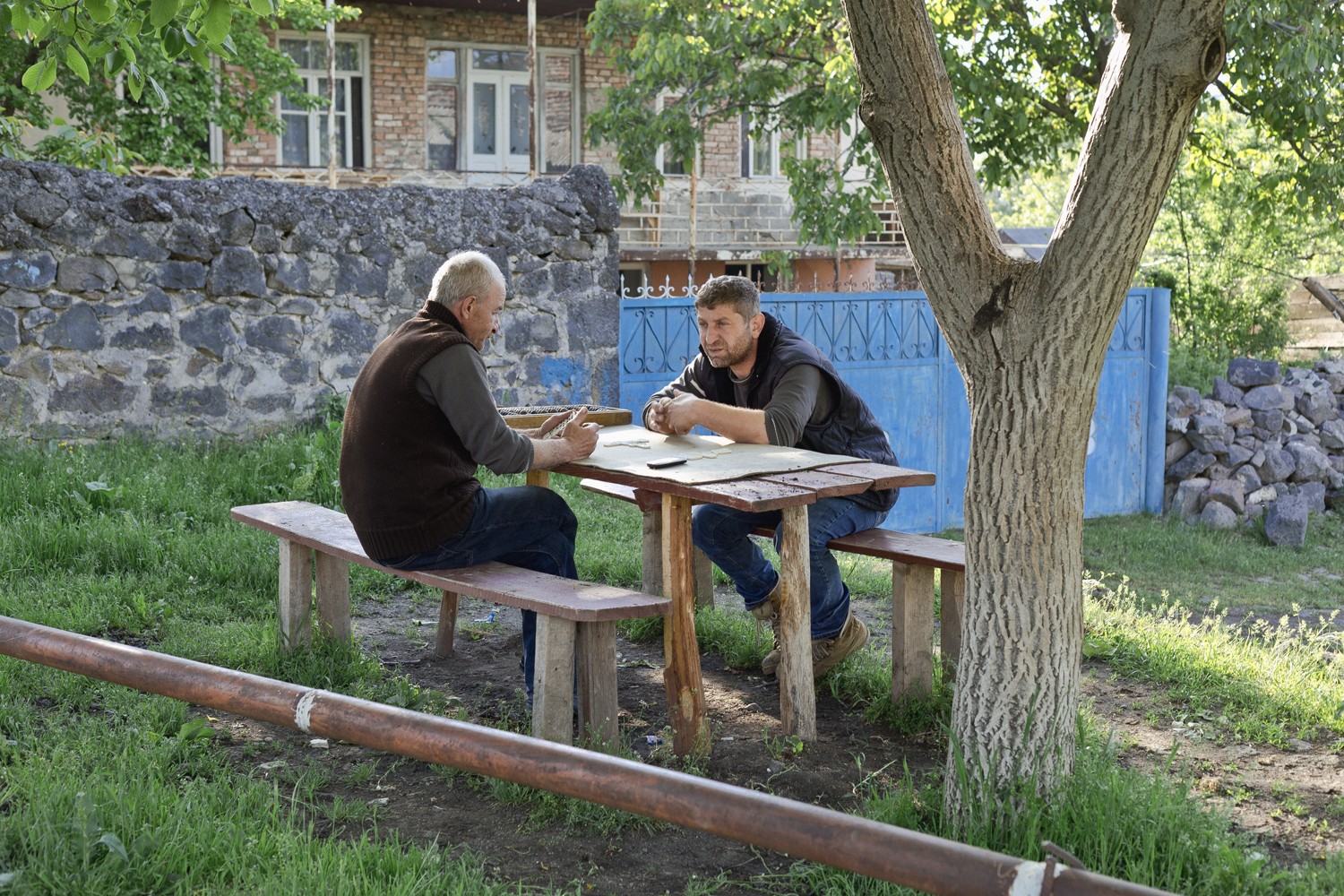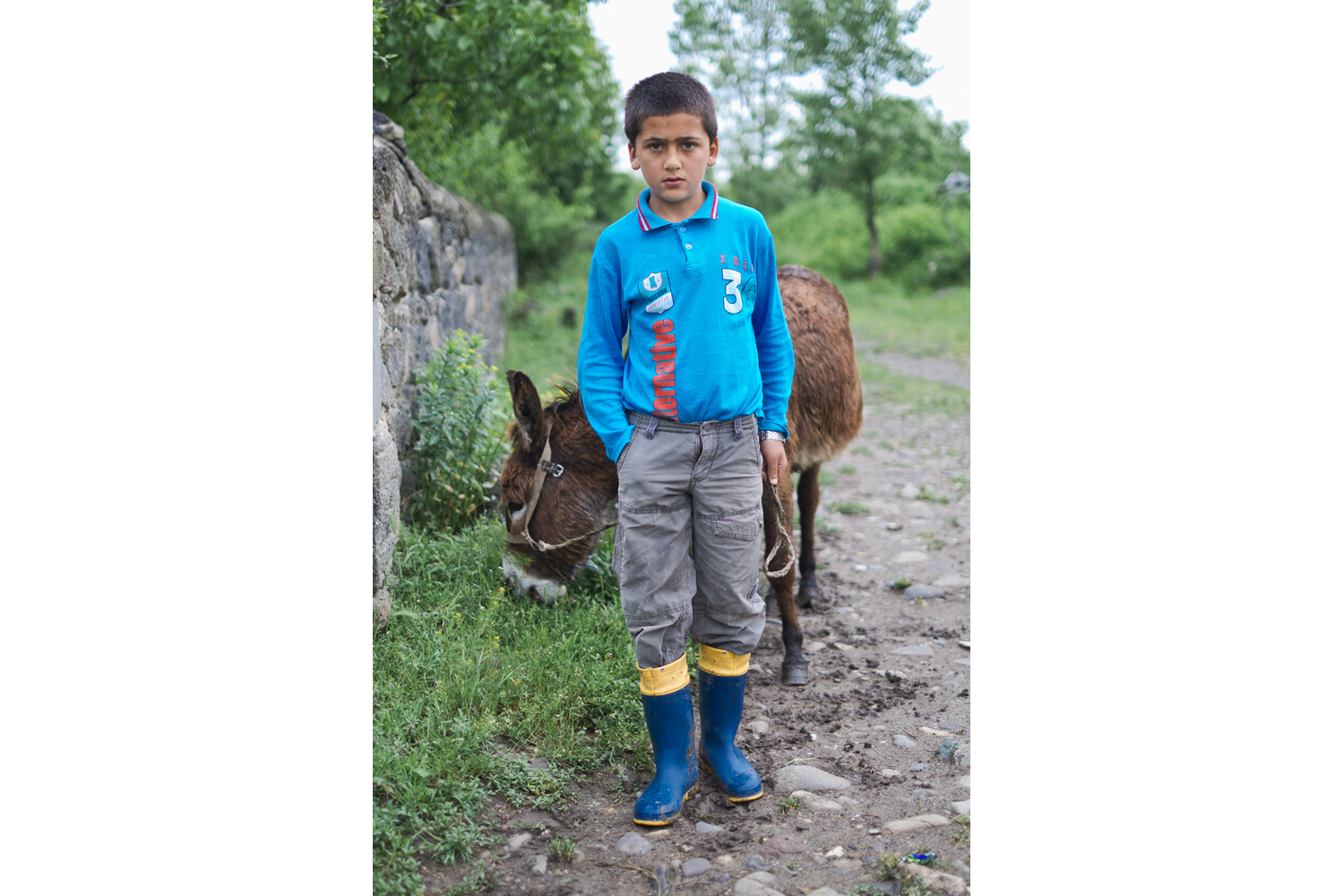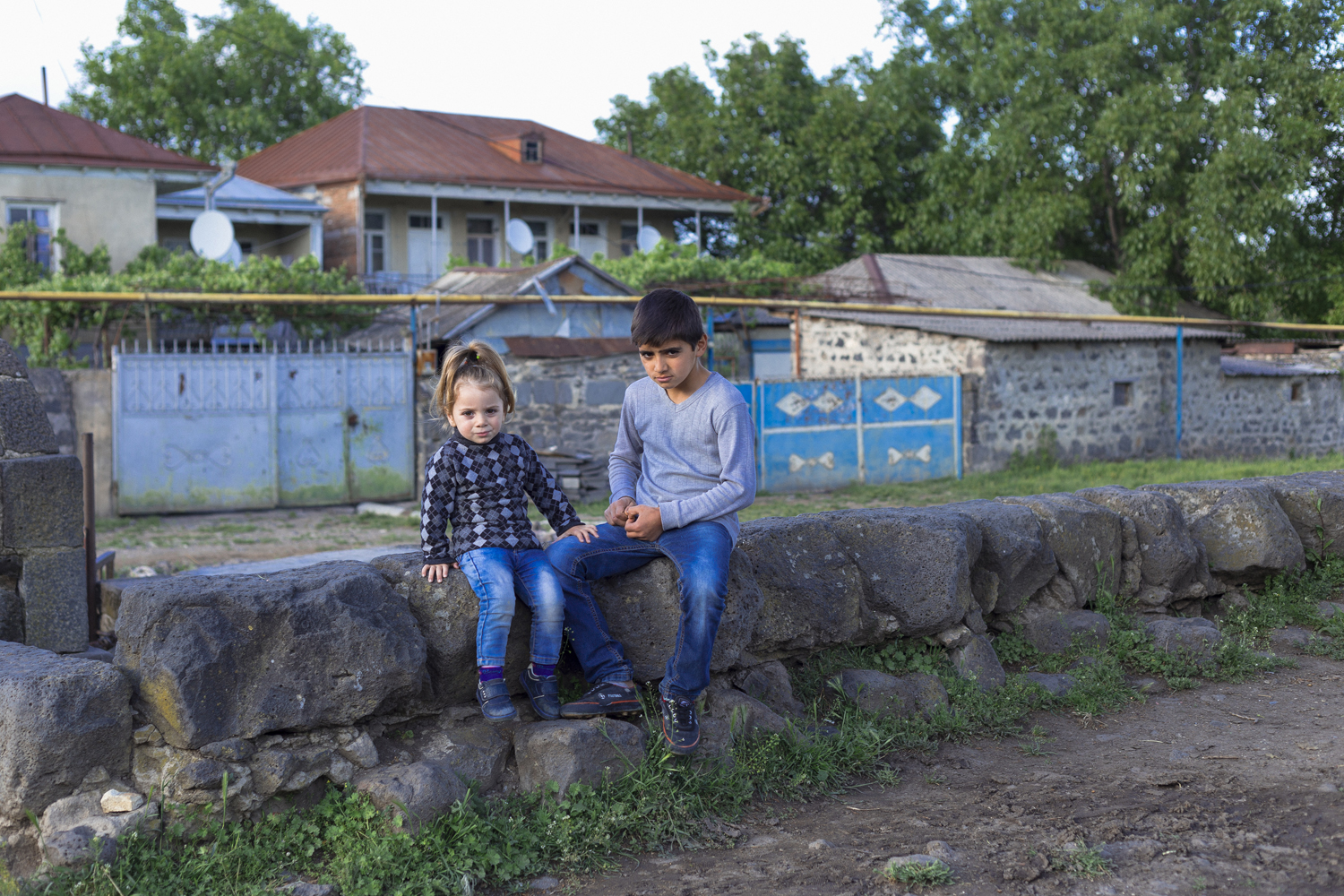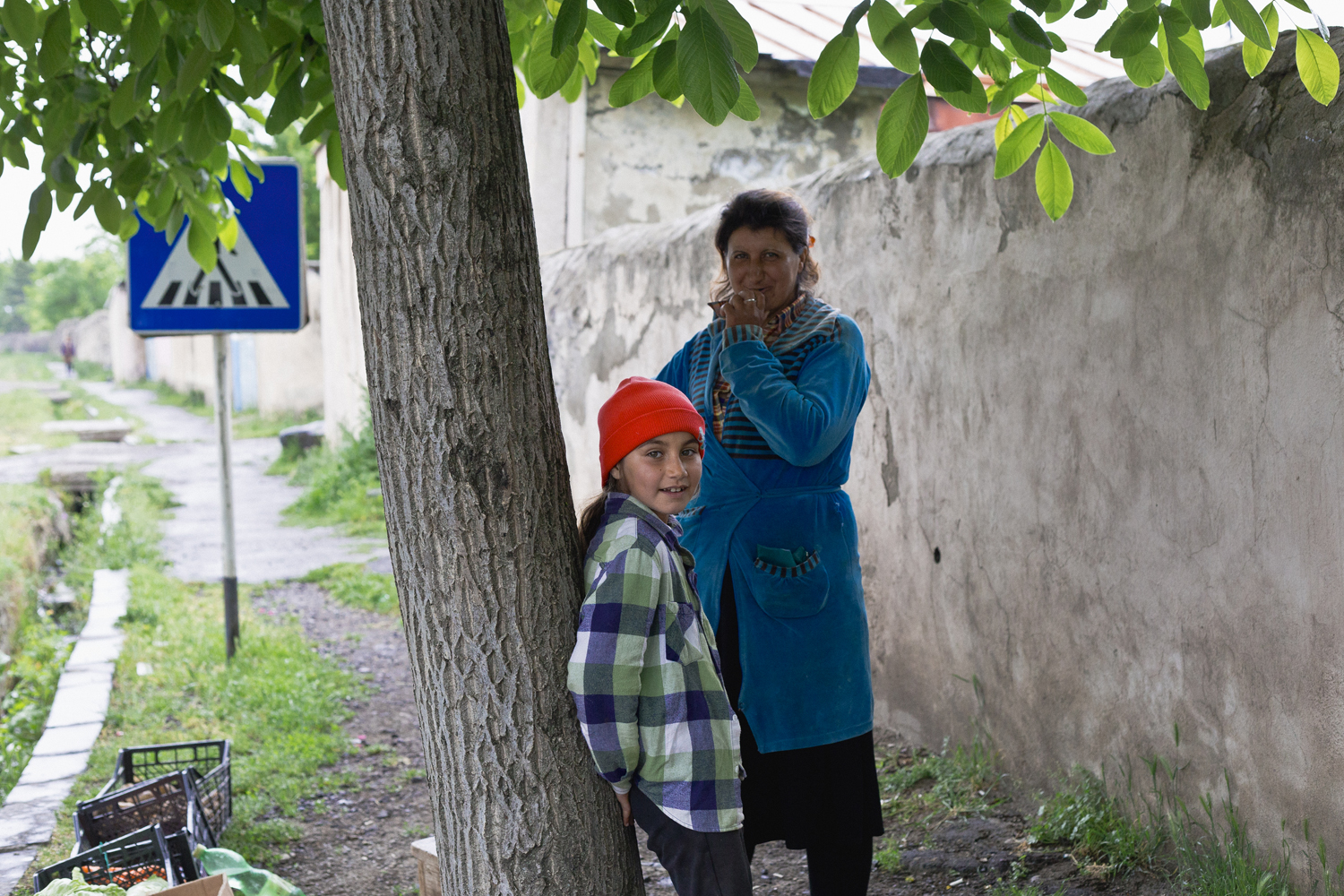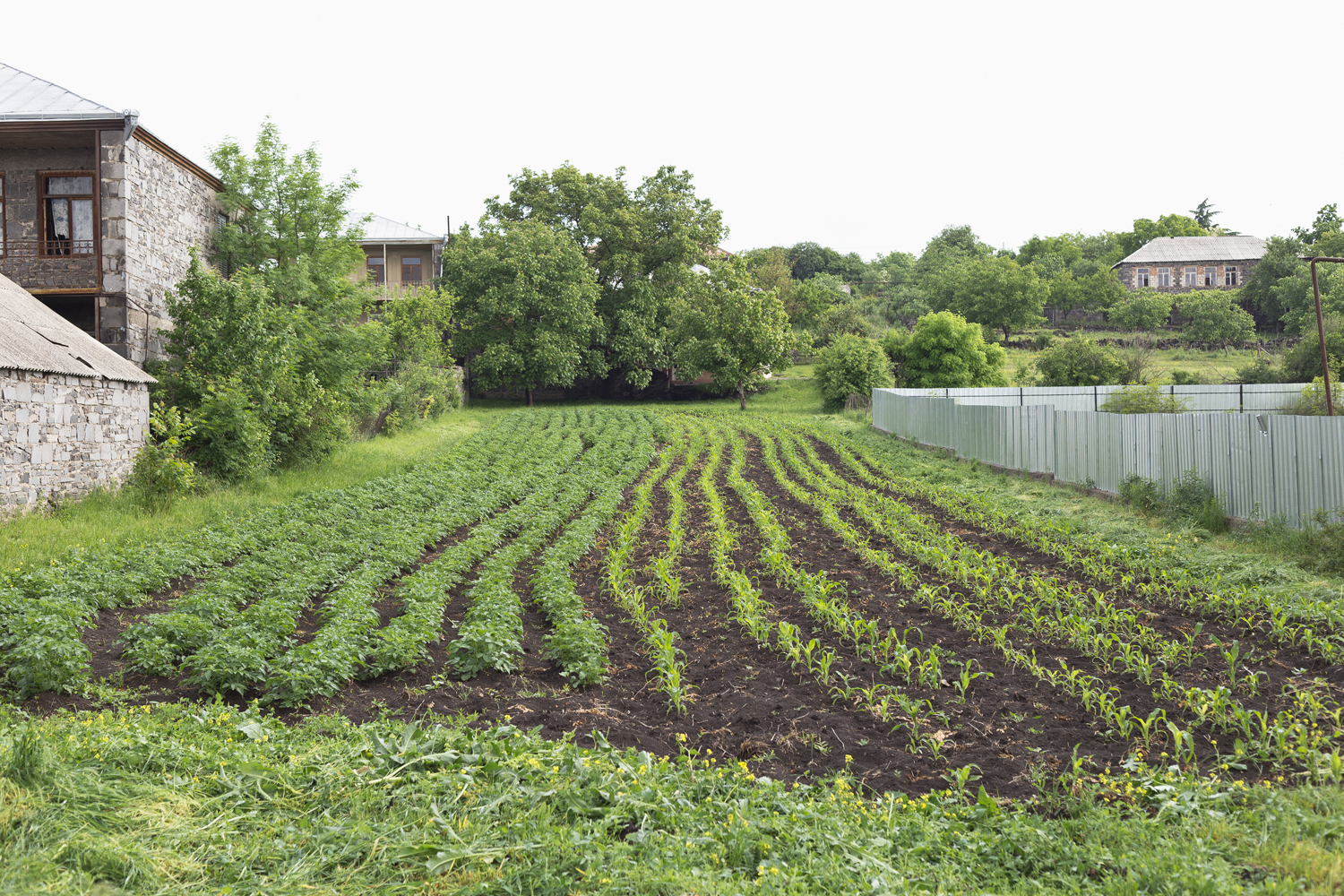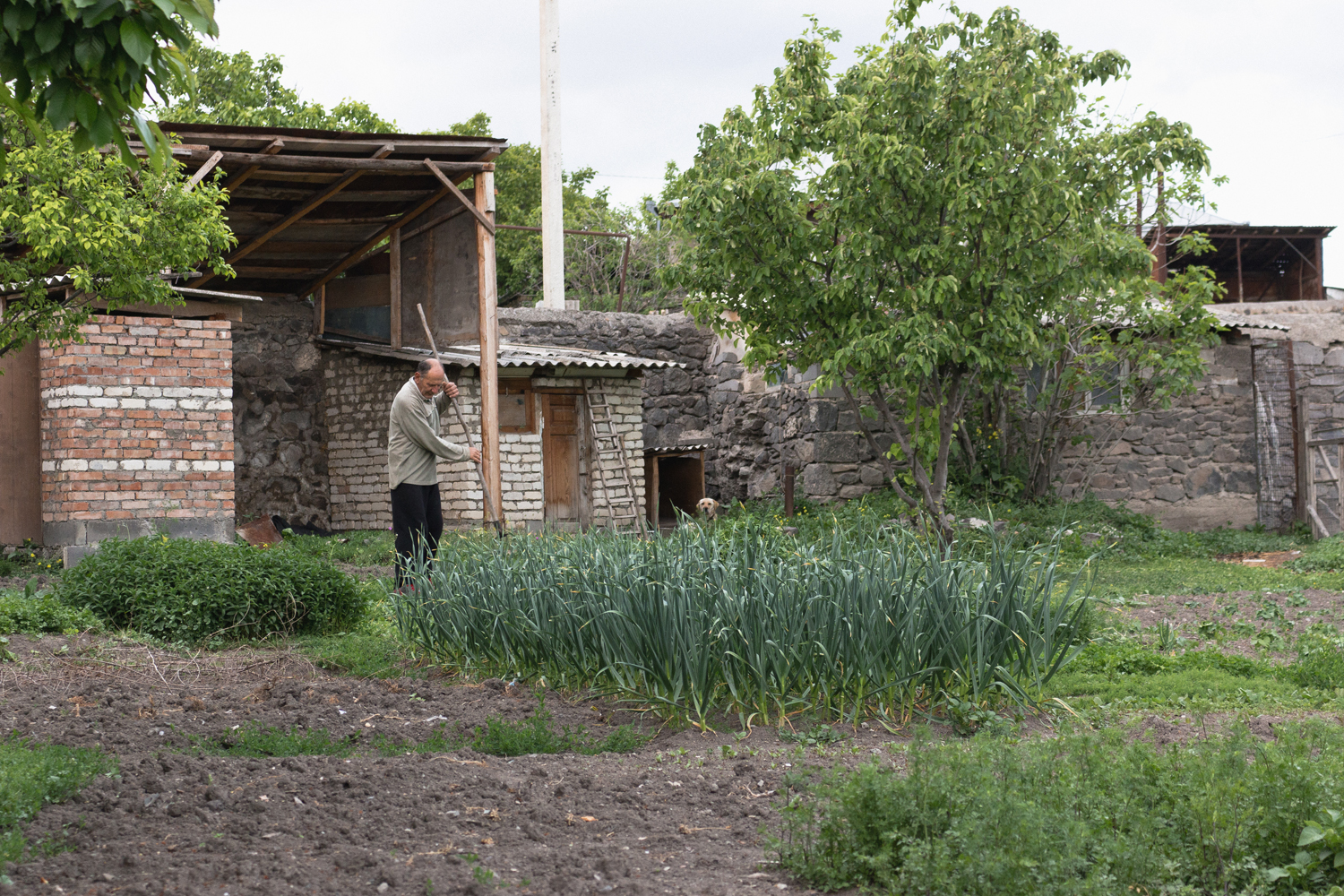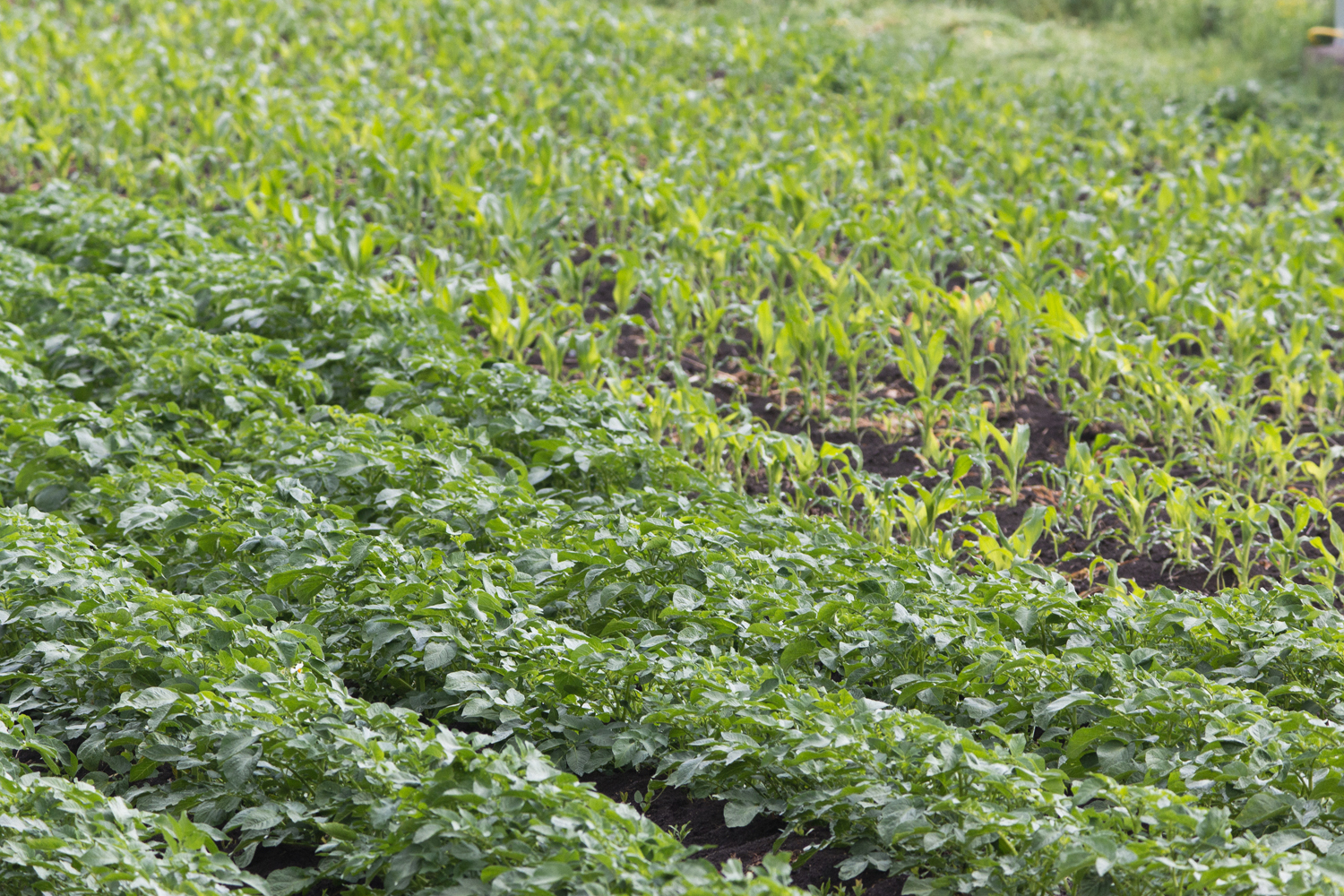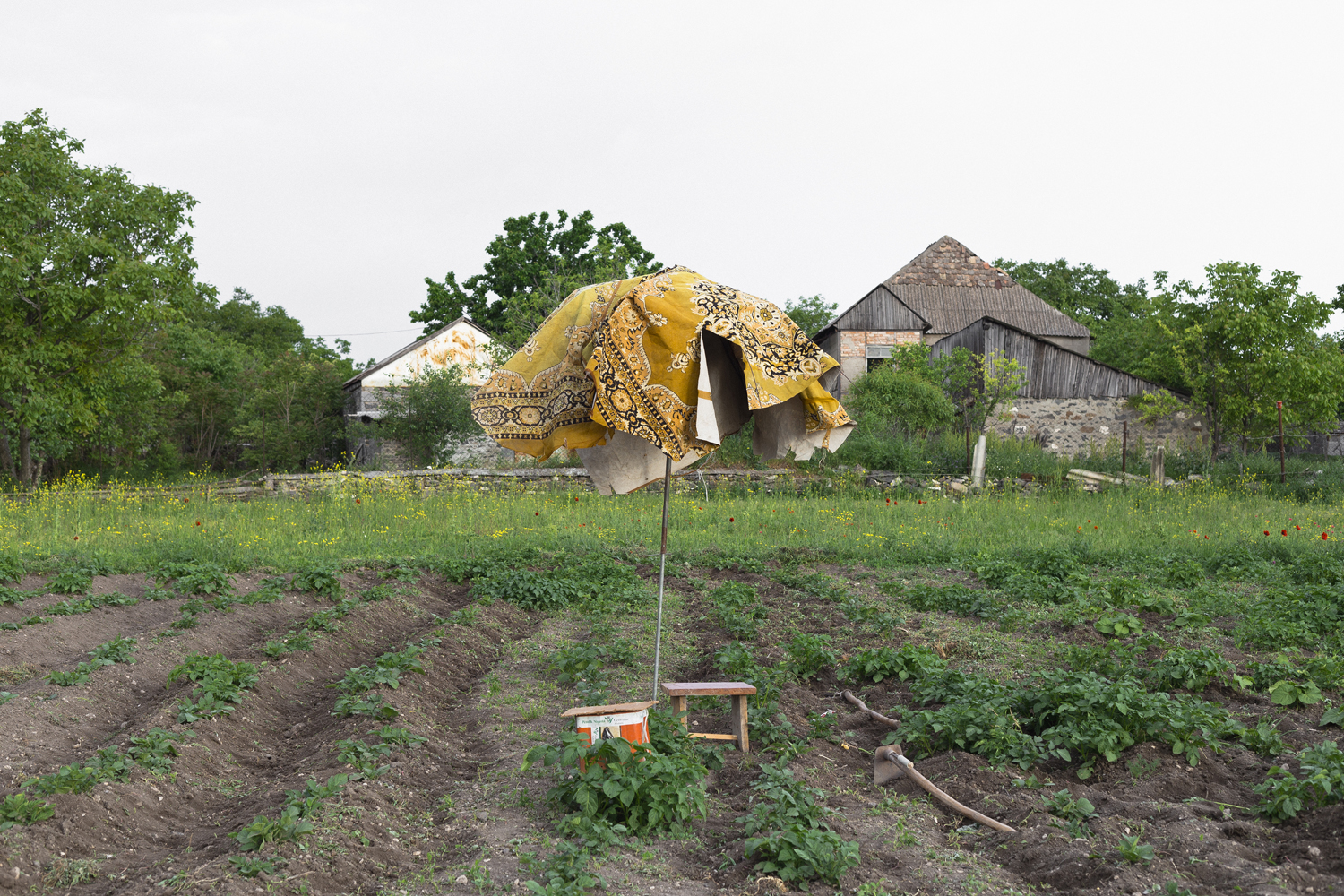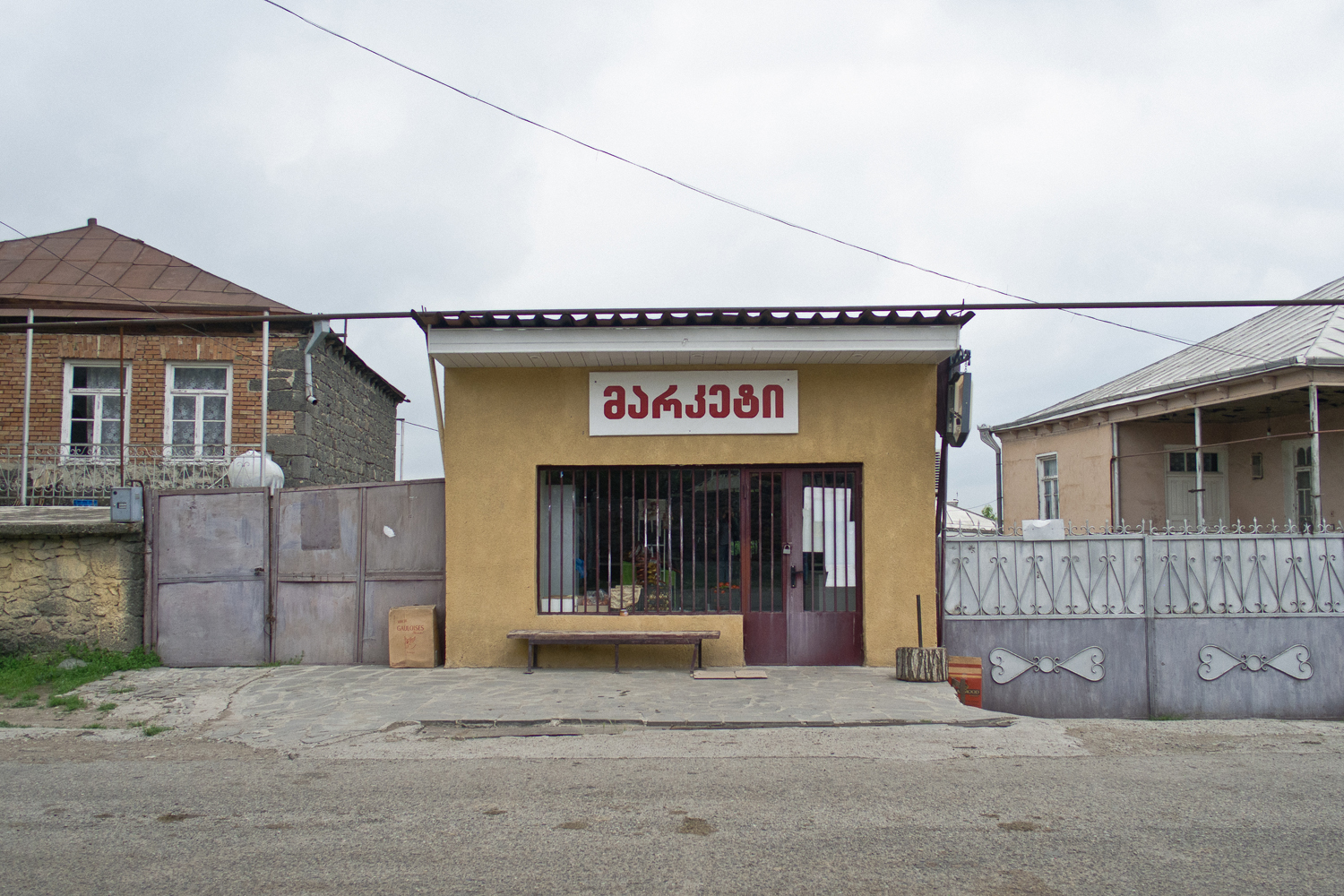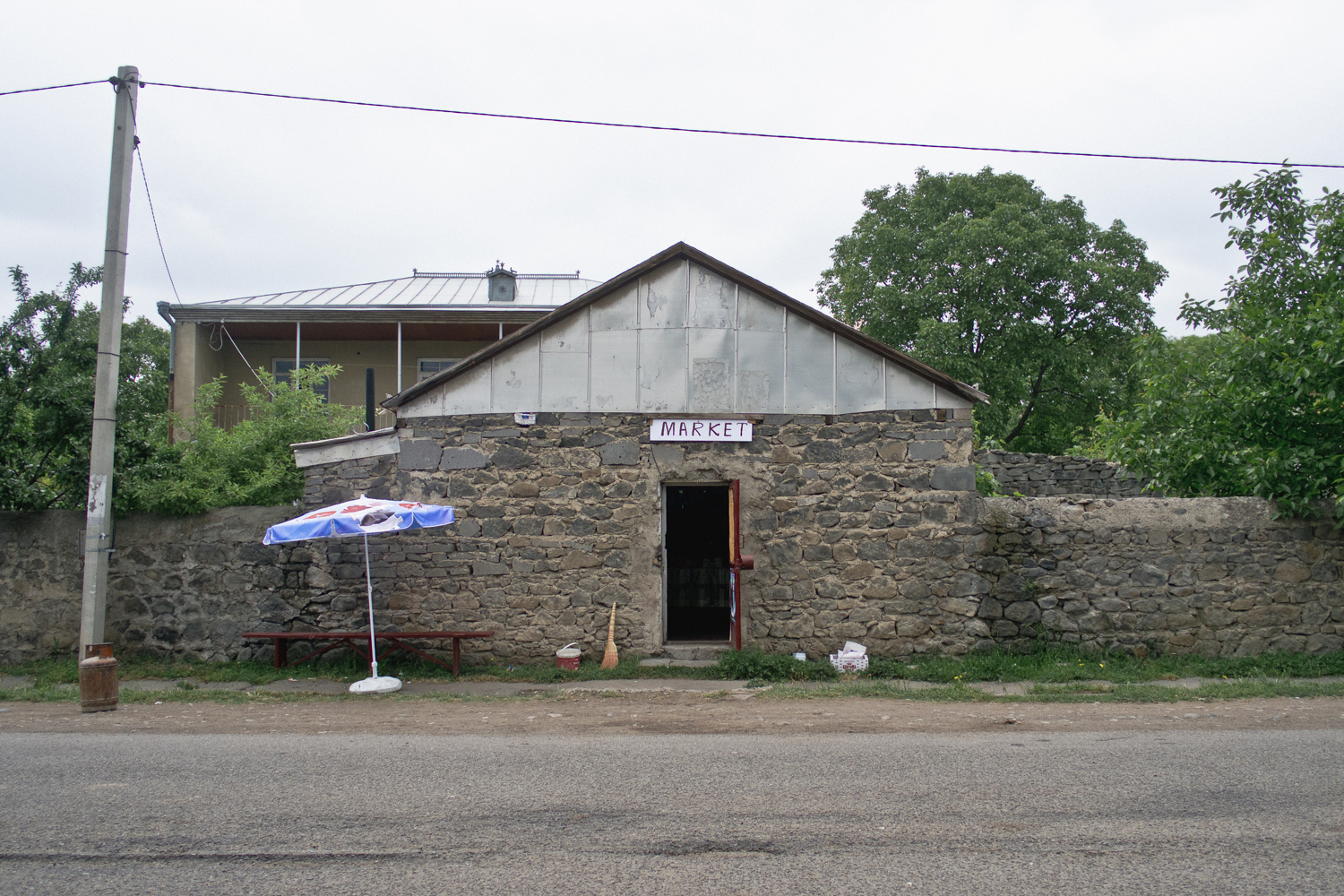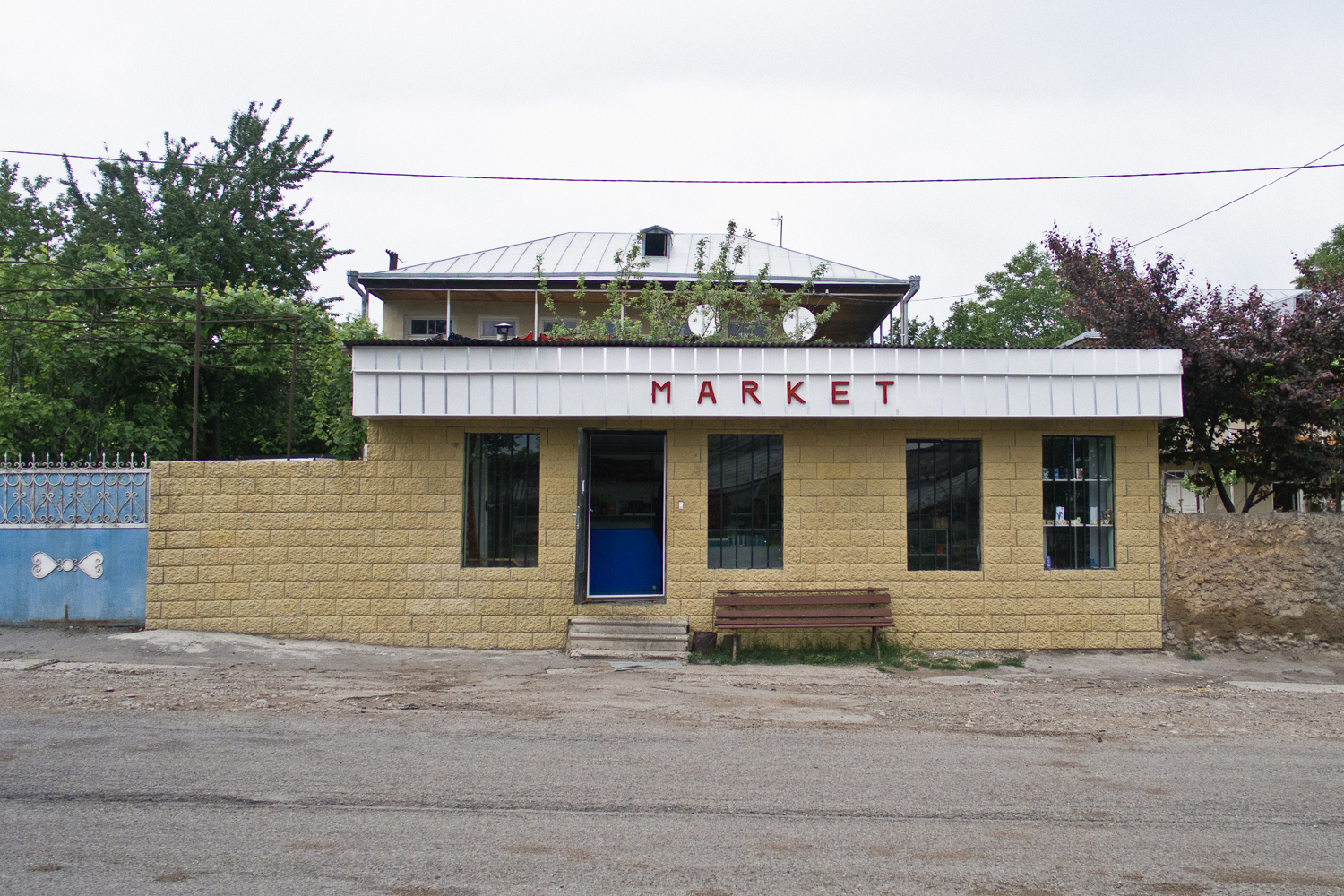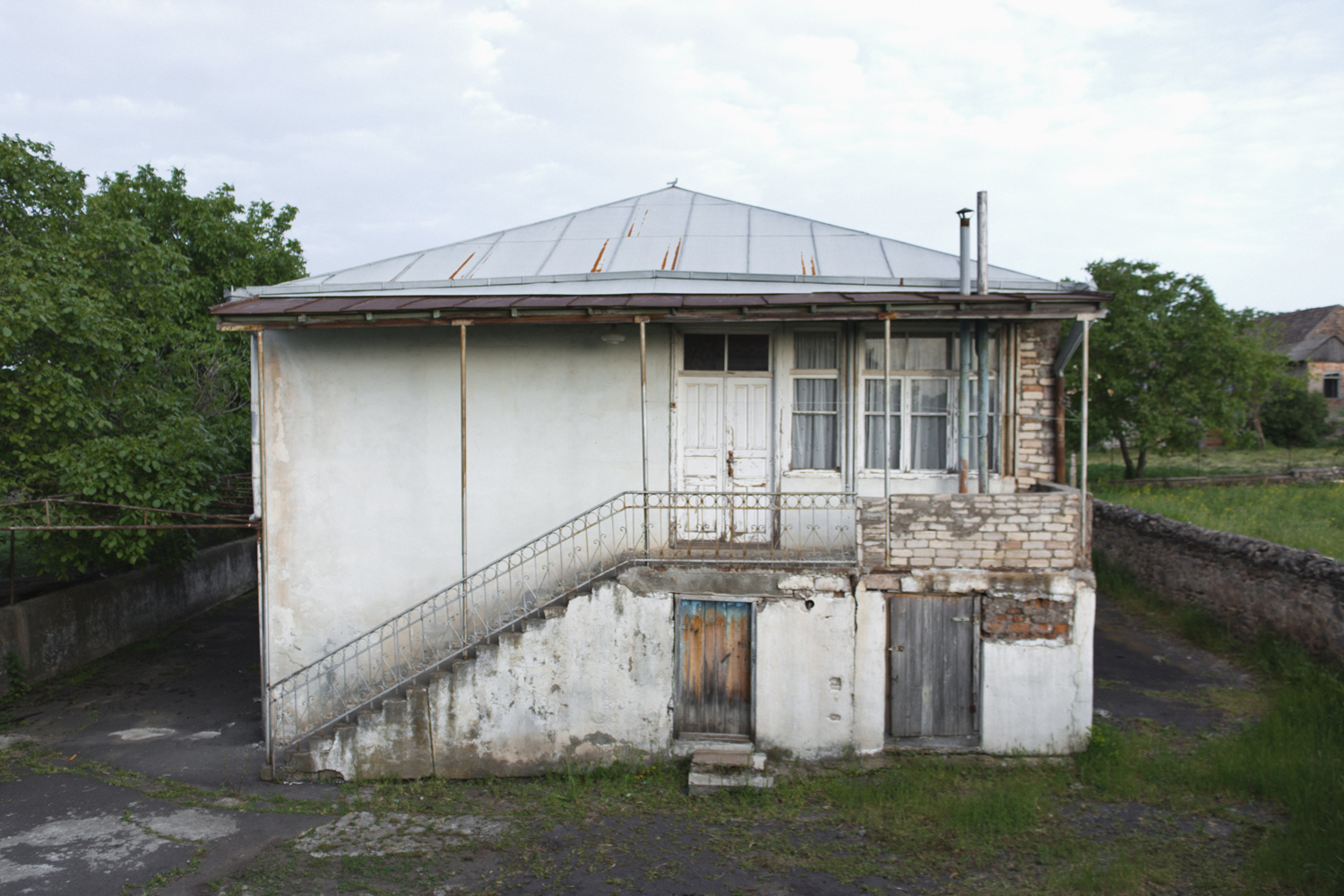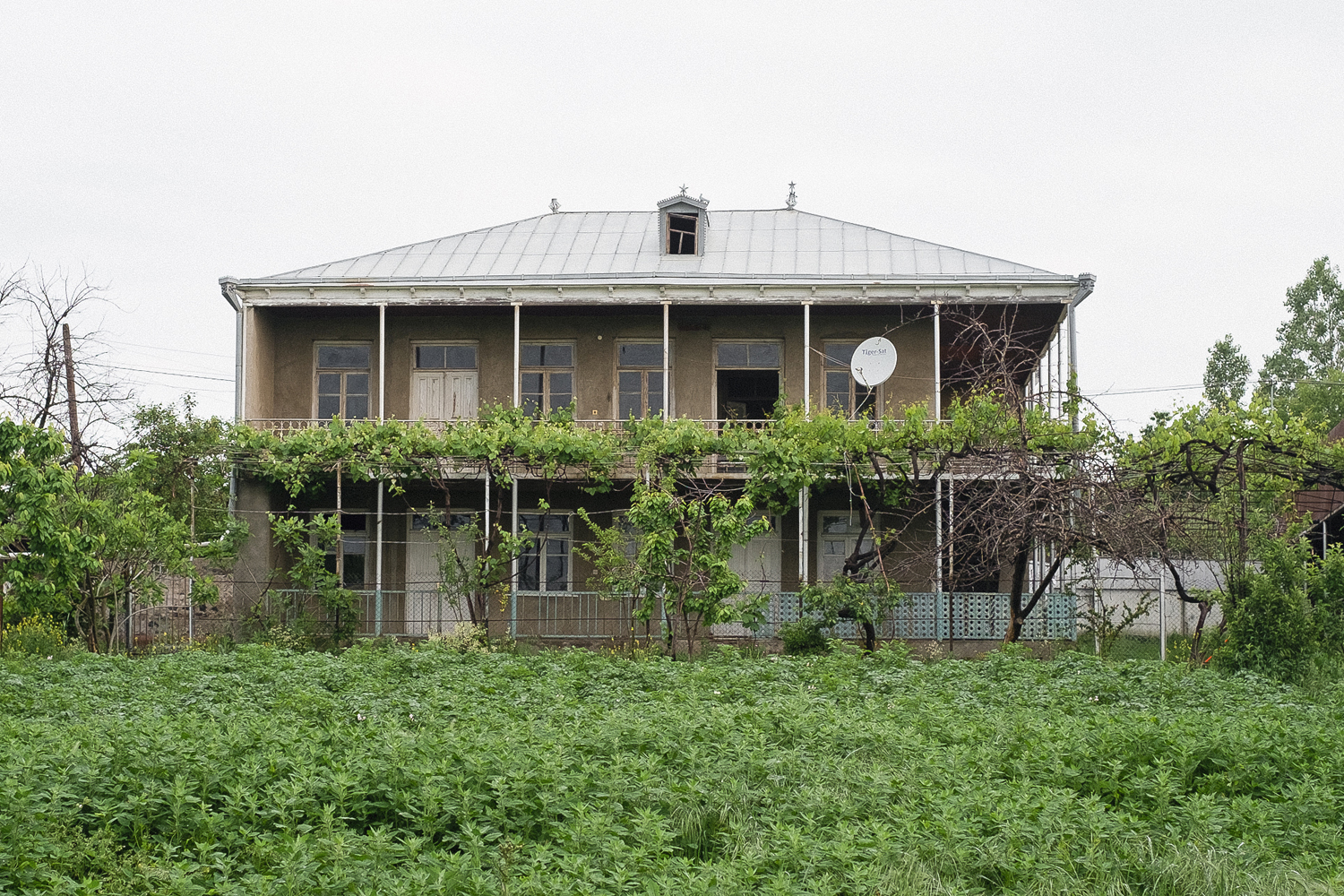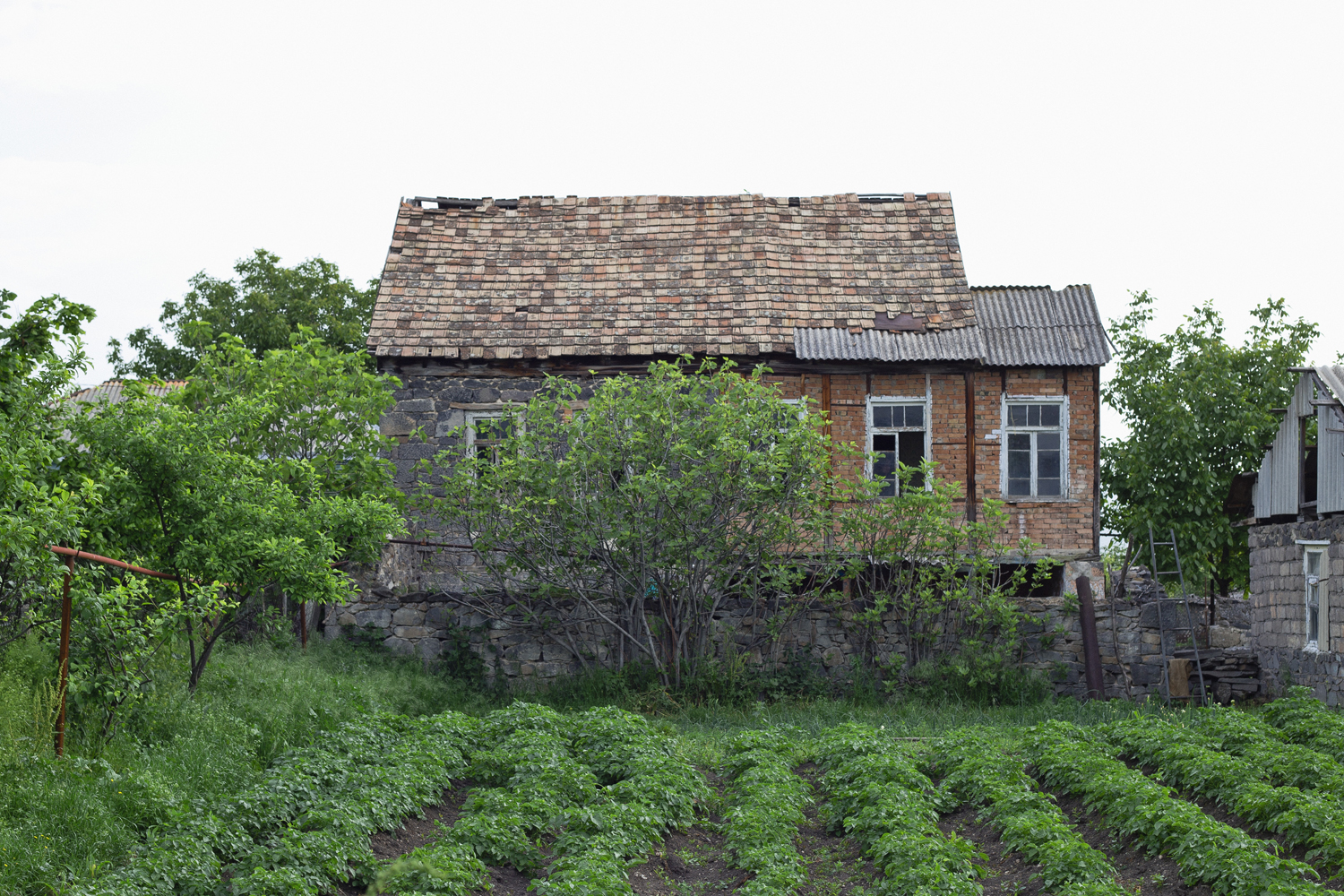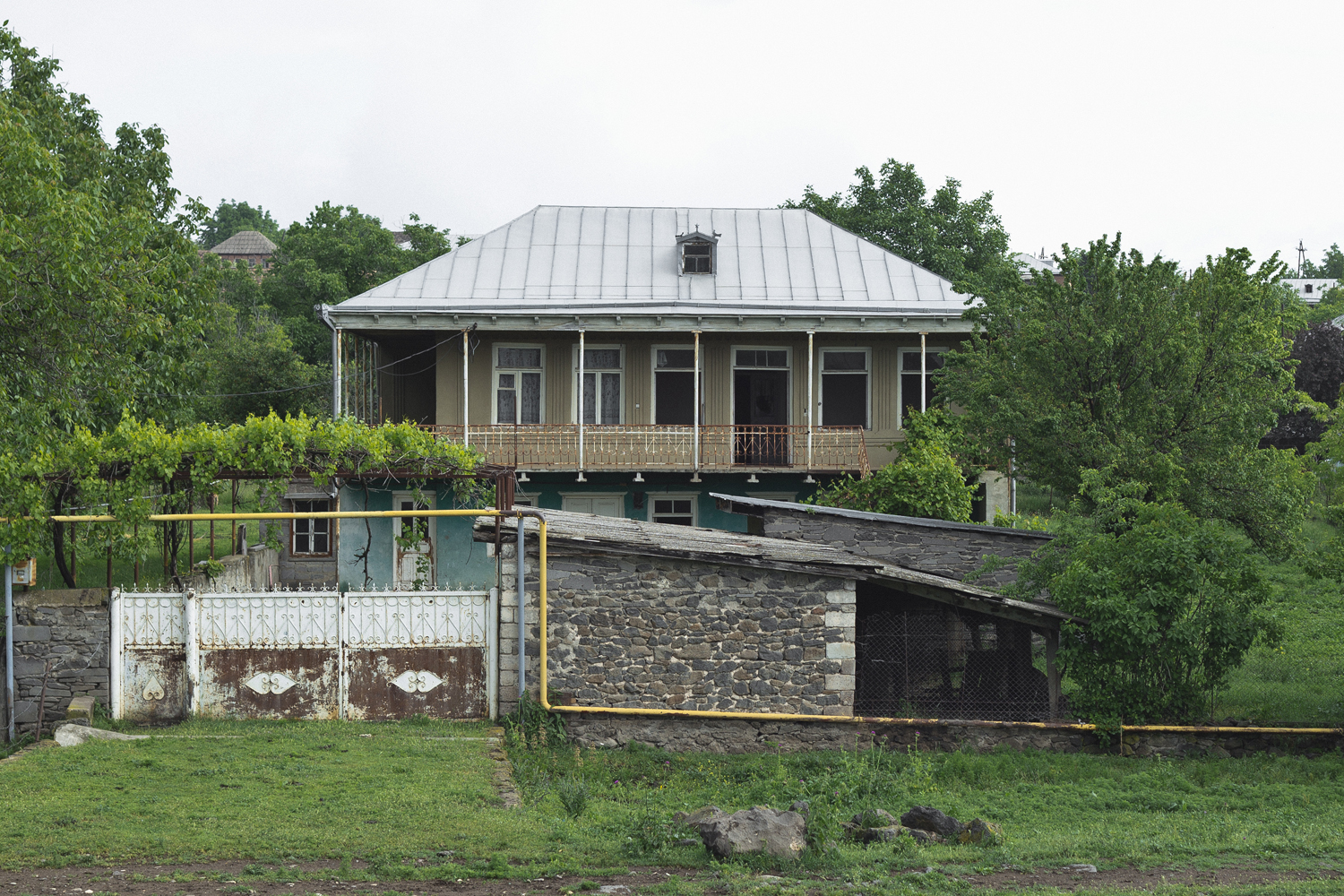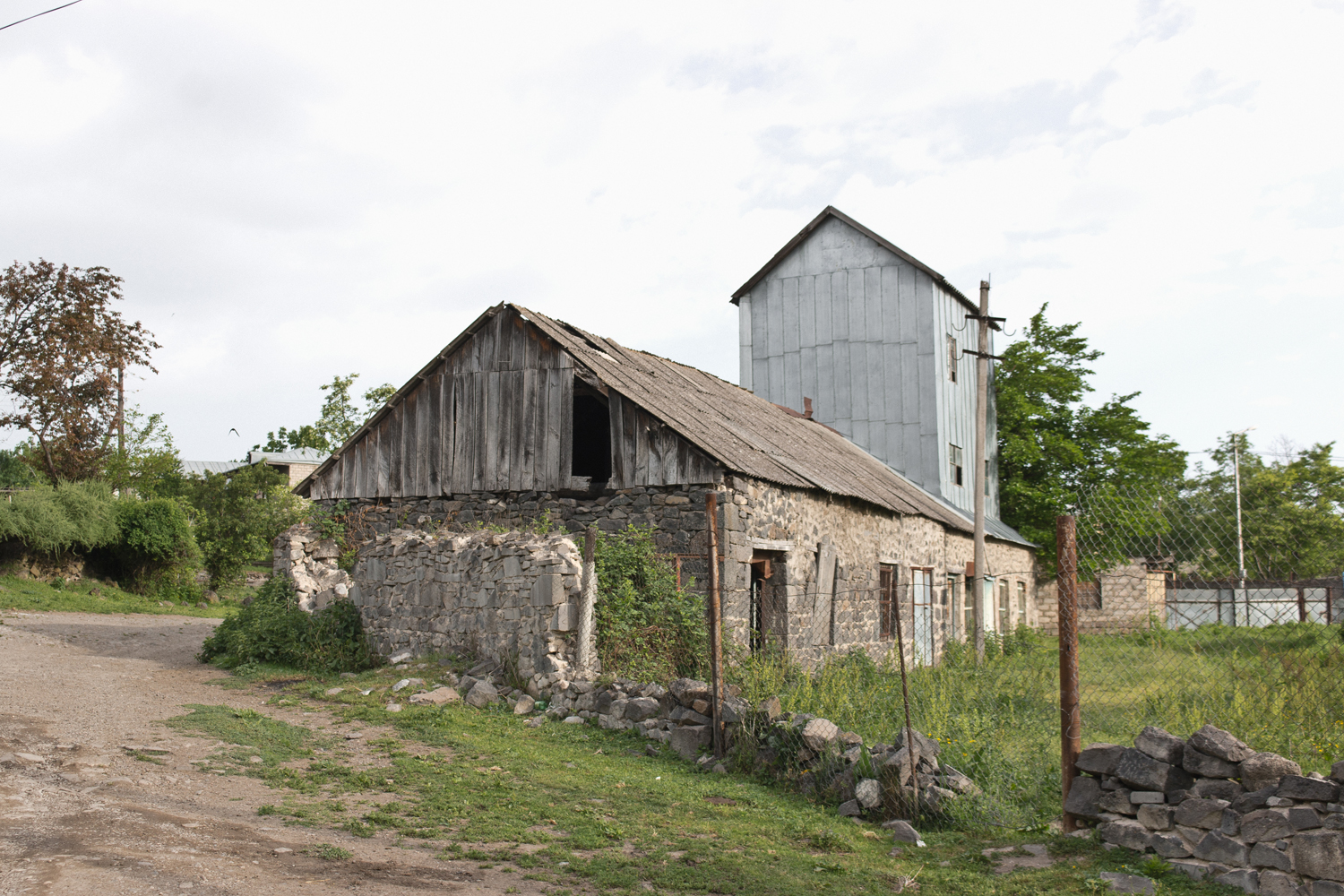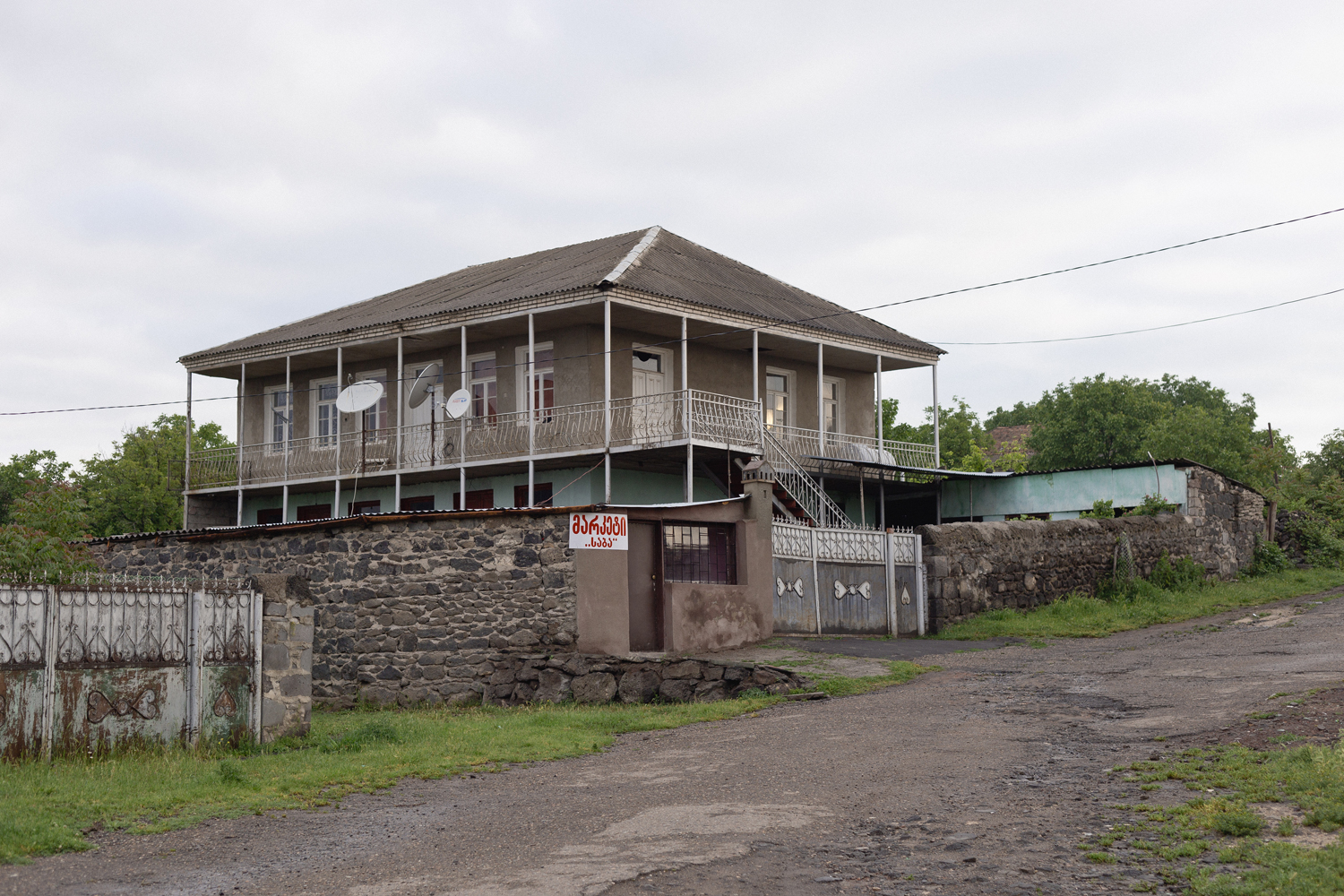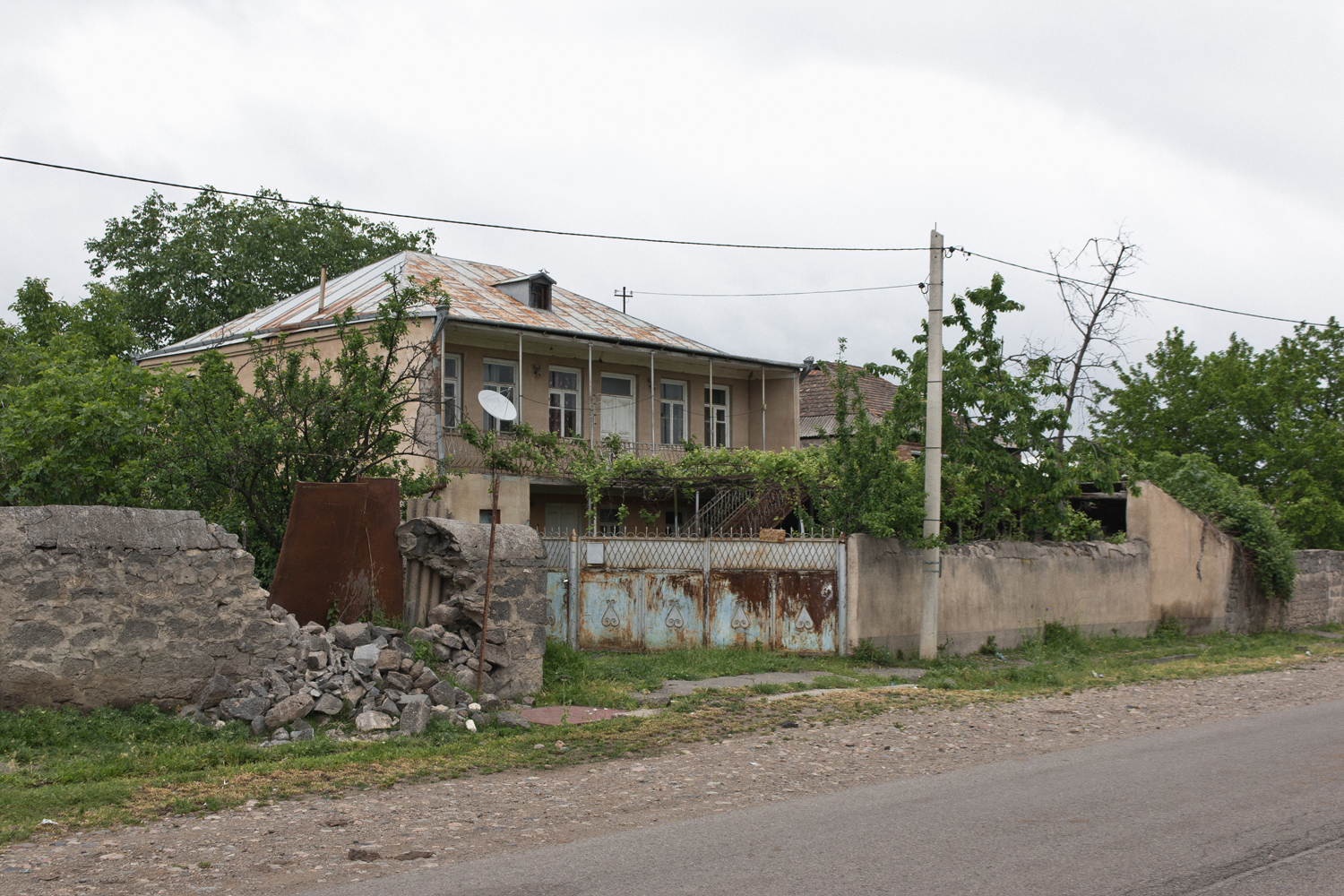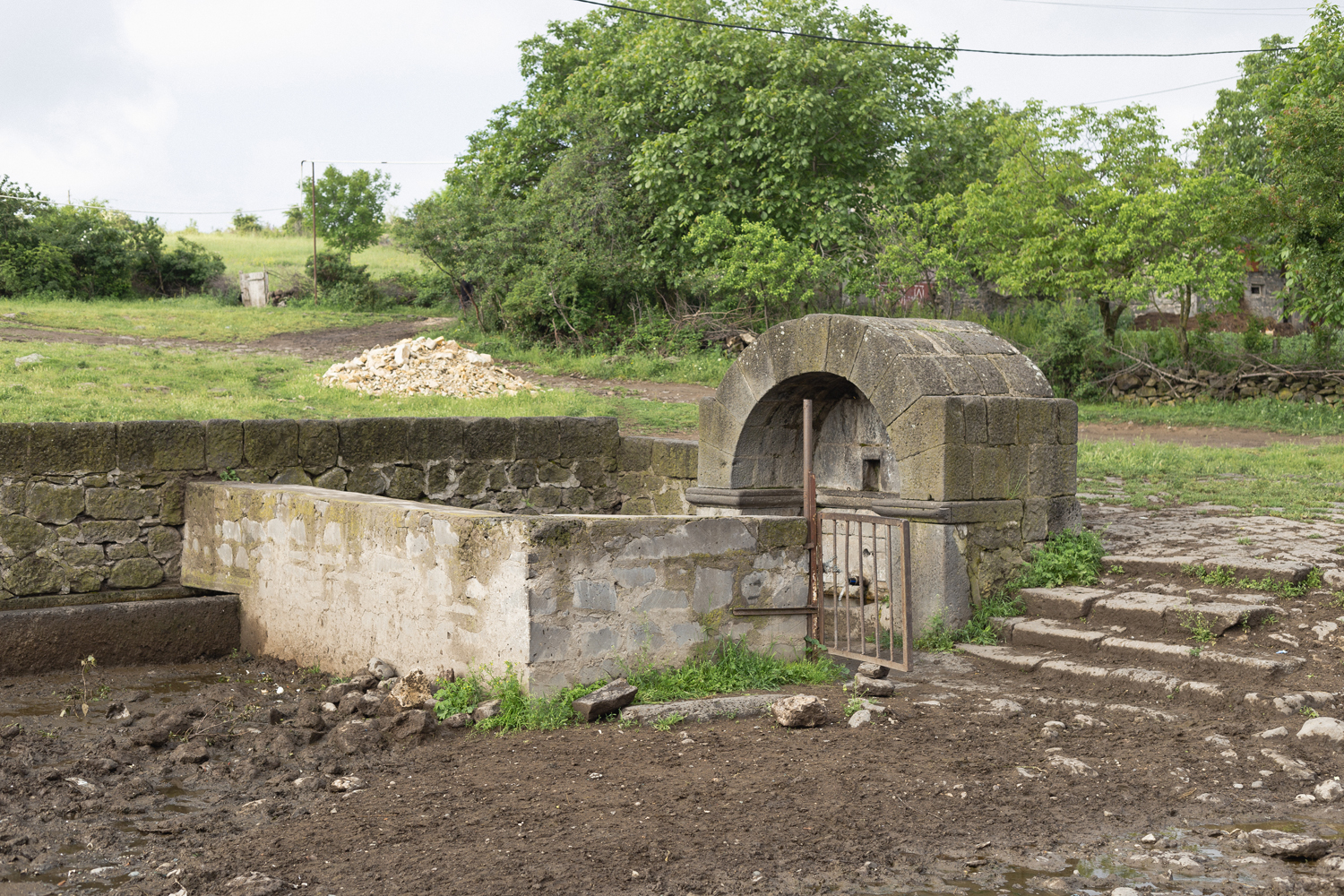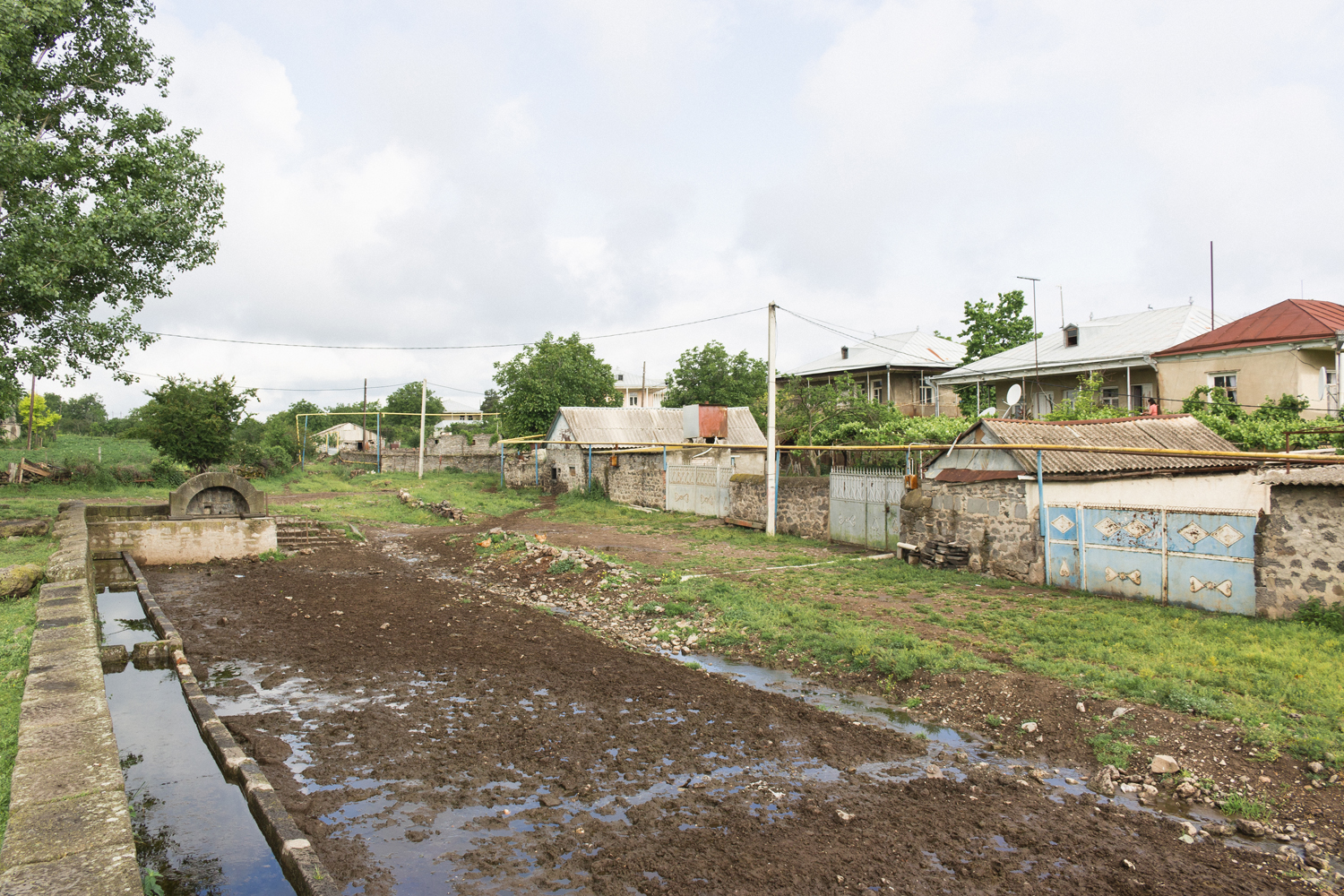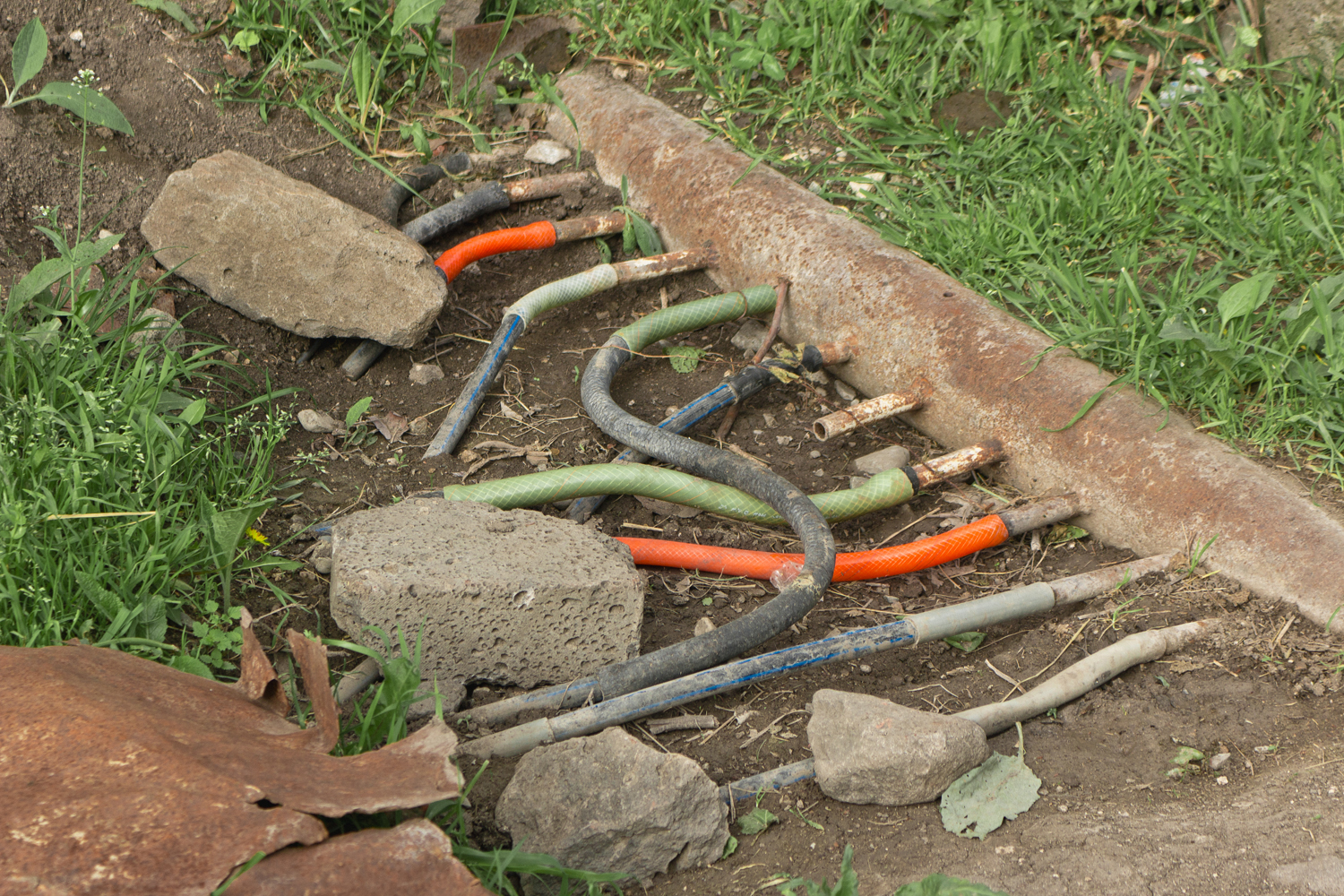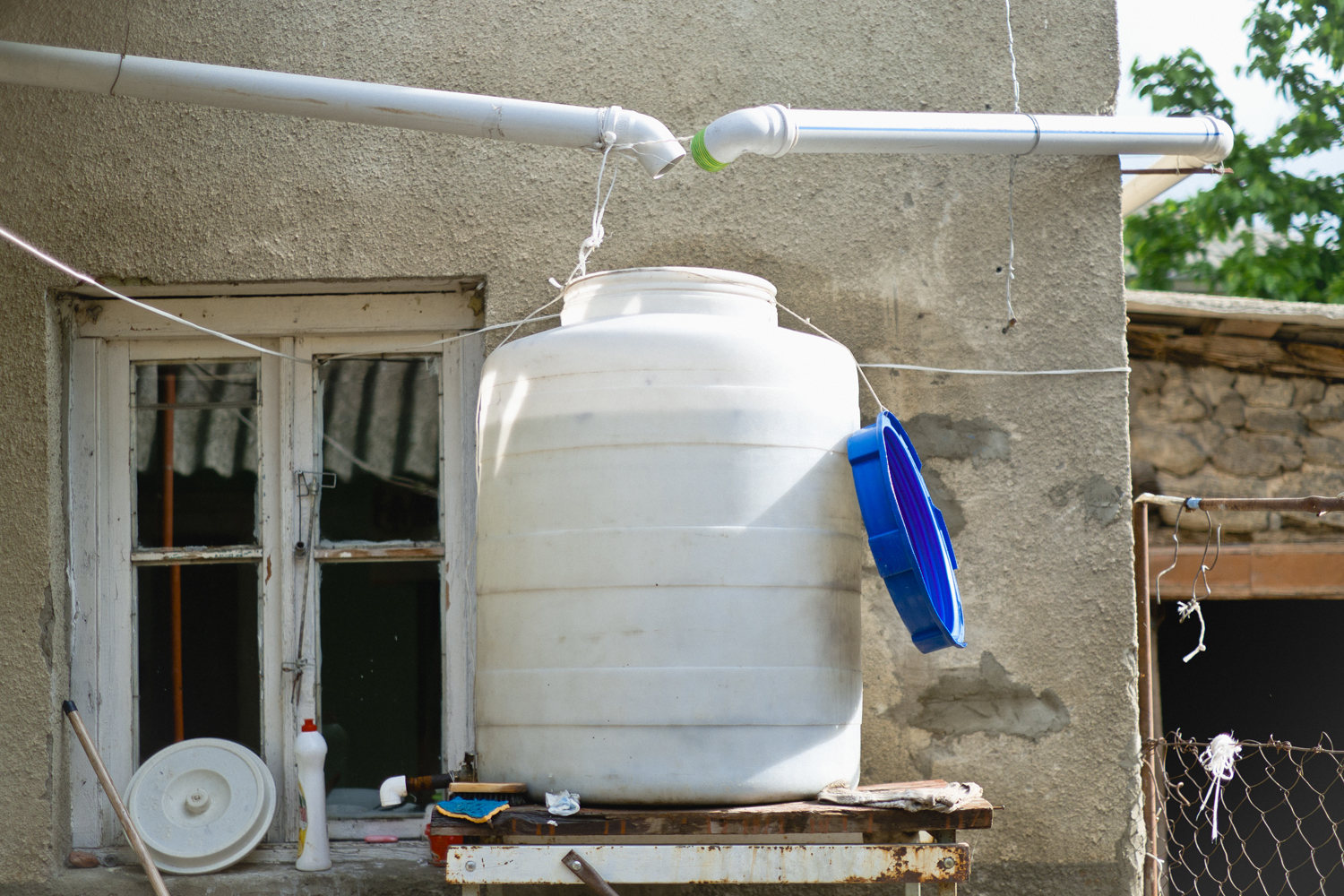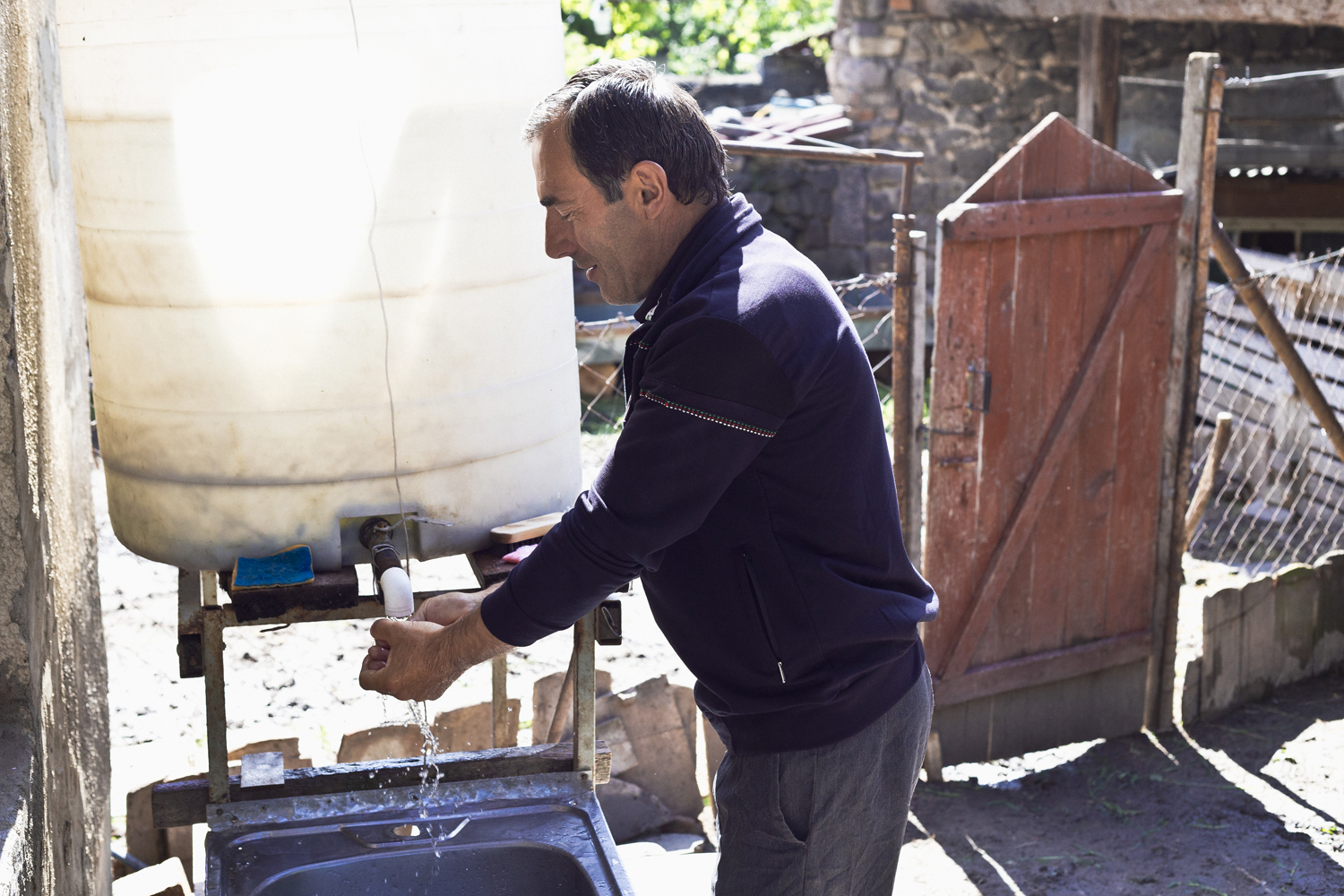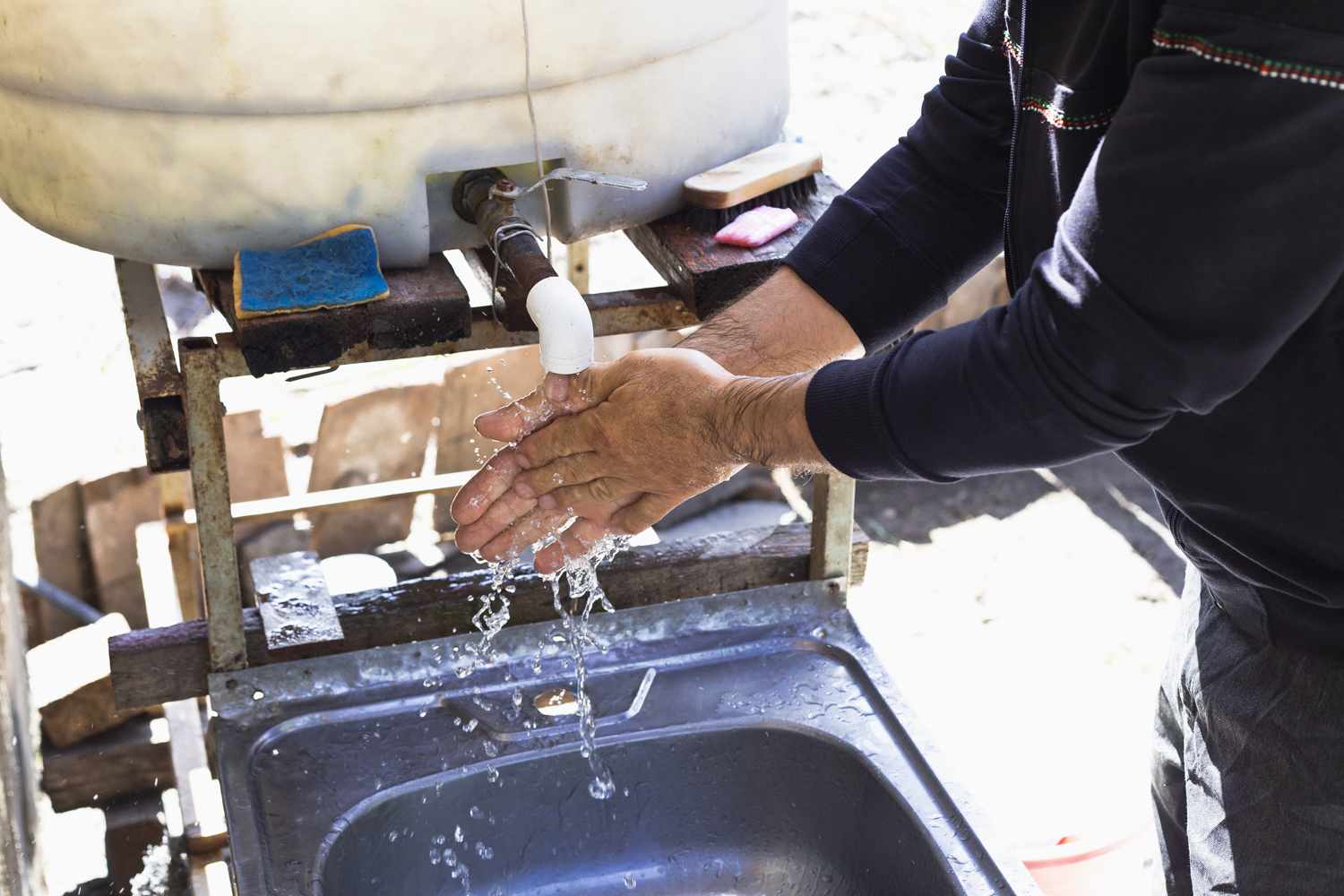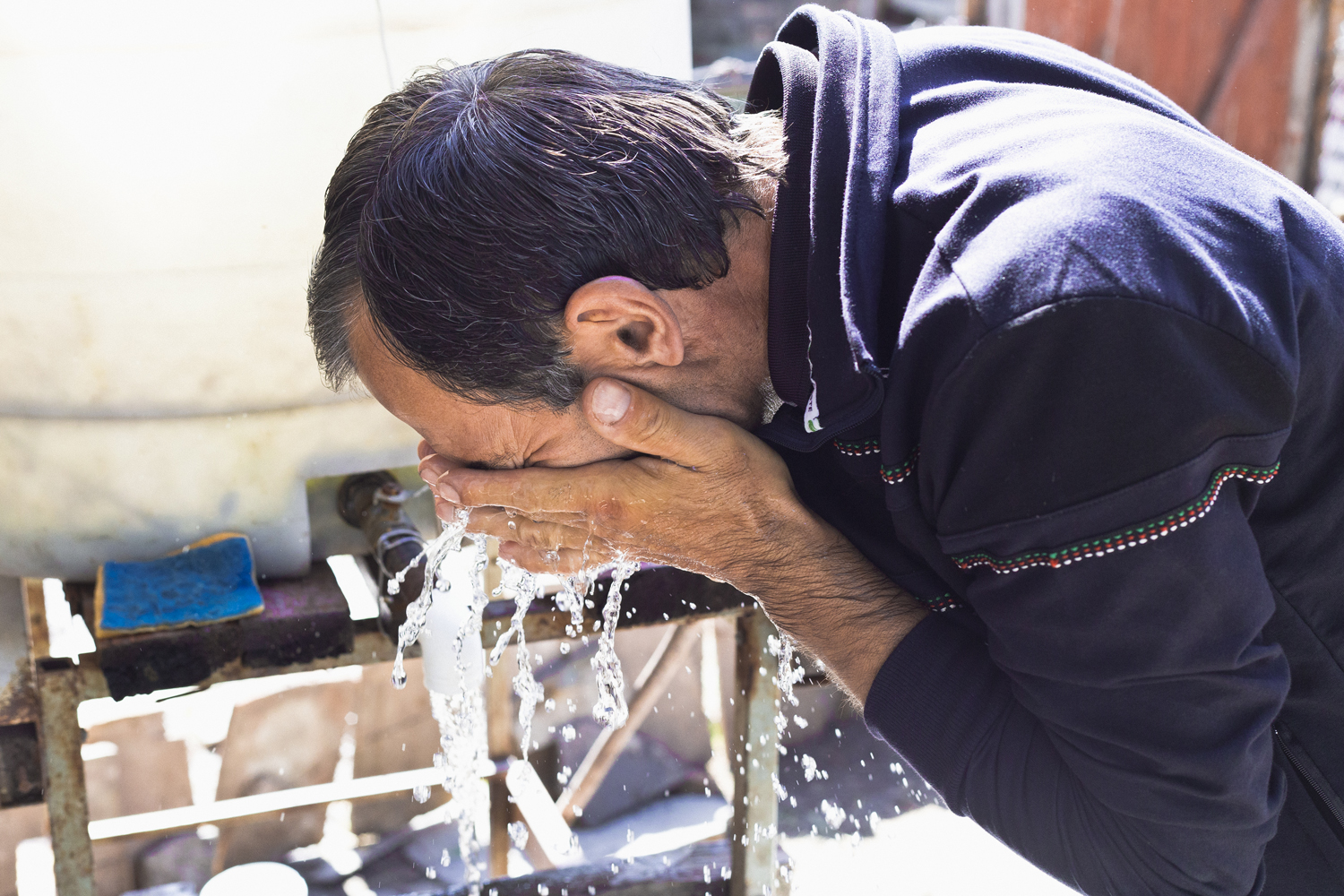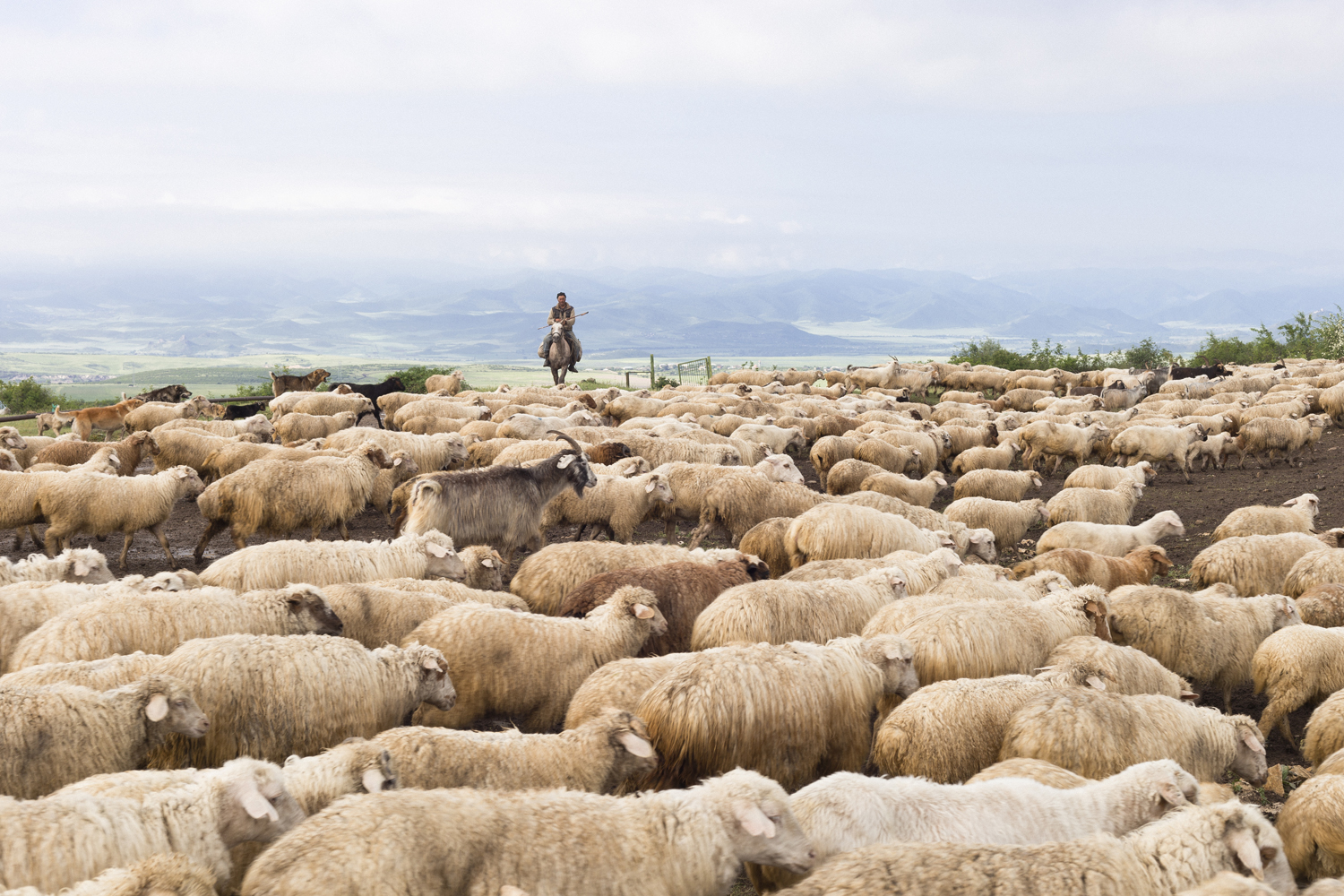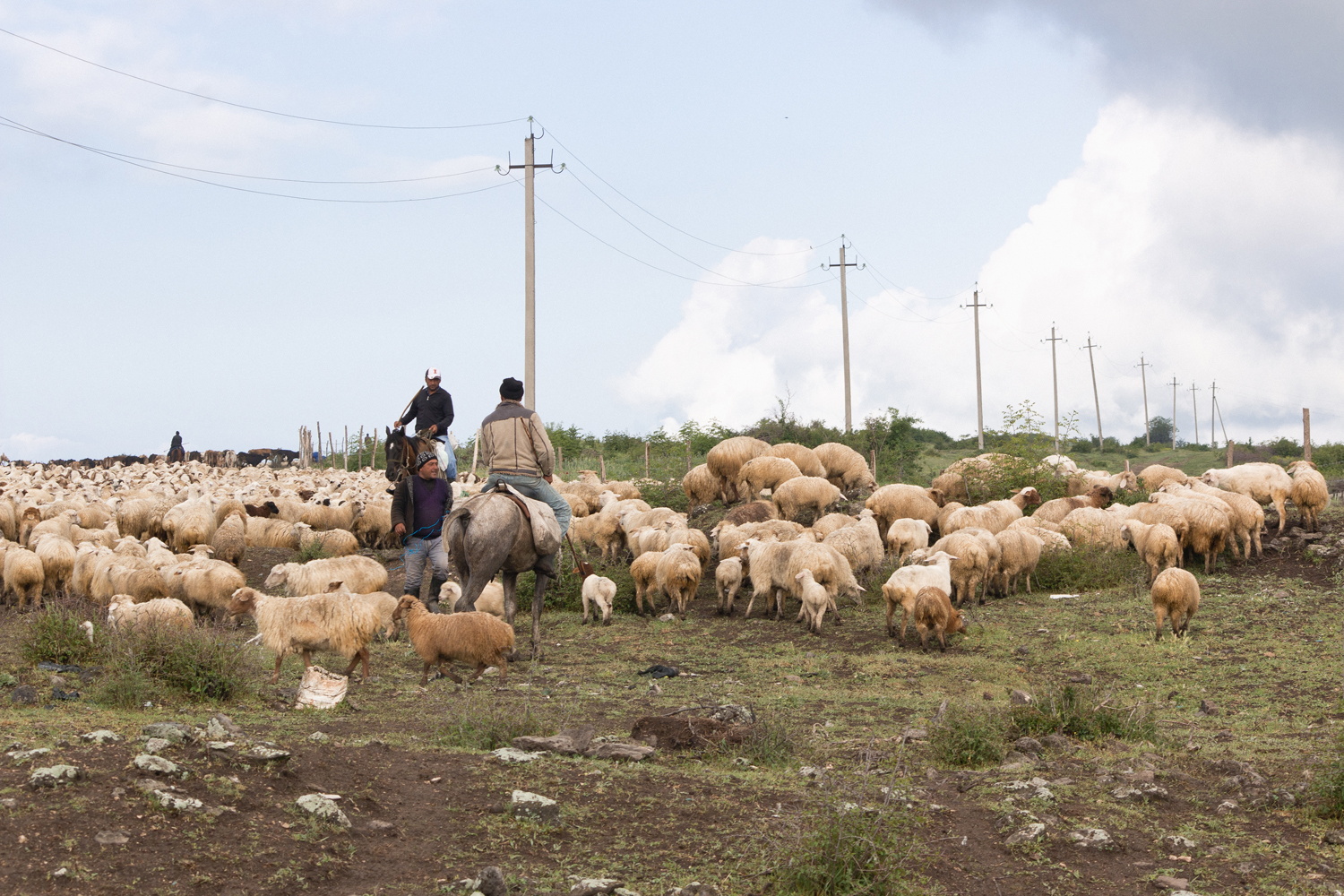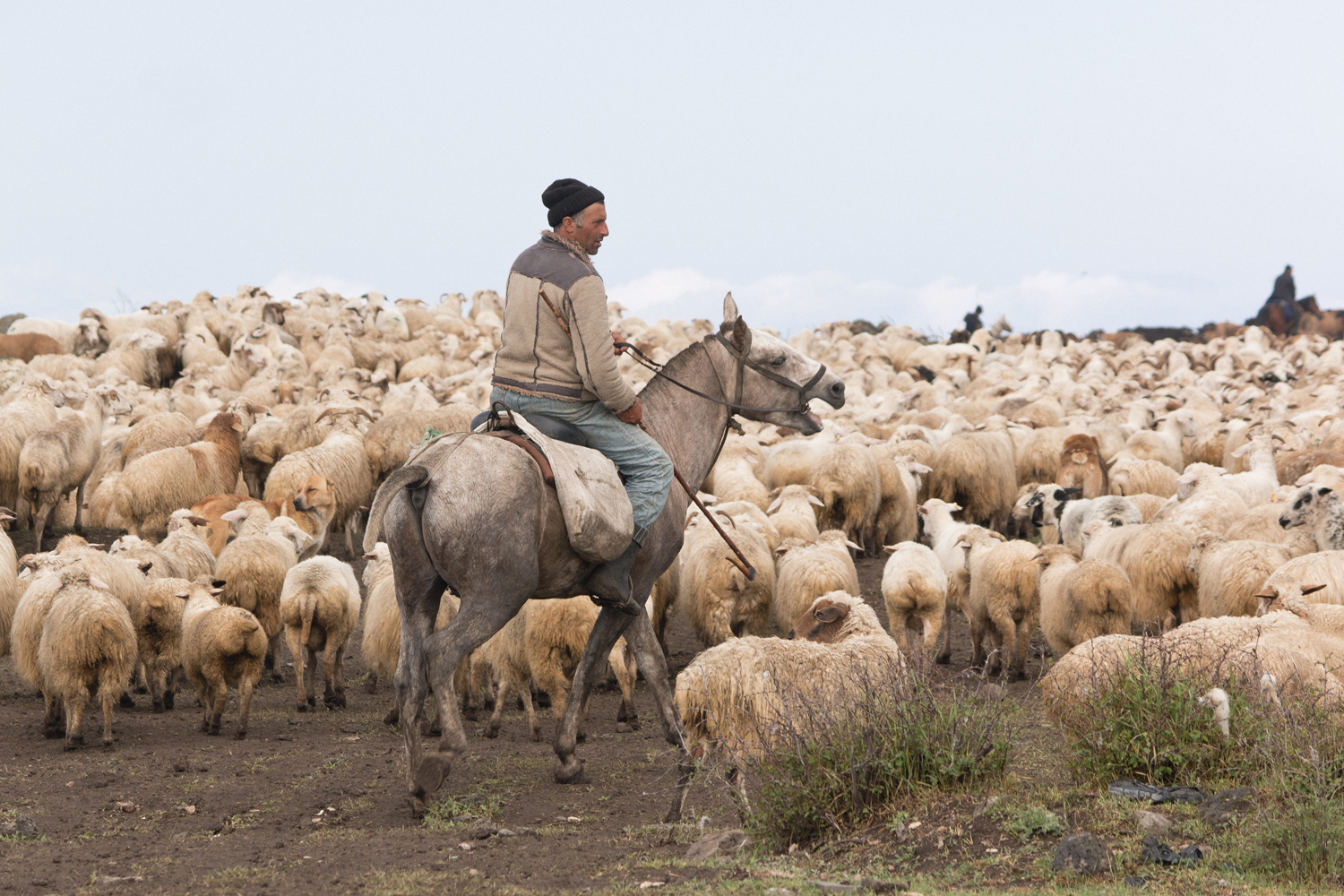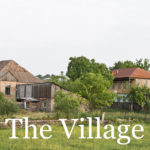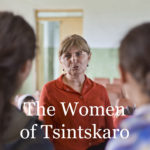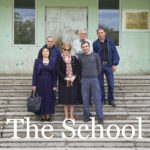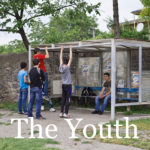Project Description
The war between Georgia and Russia in 2008 forced many families to leave their home, especially the ones from the frontiers Abkhazia and South Ossetia. — Once only known because of a titular song „Tsintskaro” sung by Hamlet Gonashvili, often referred to as „the voice of Georgia”, the village Tsintskaro is now getting attention on its own. Situated in the province Kvemo Kartli in southern Georgia, Tsintskaro (approximately 120 km/75 miles south of Georgia’s capital Tbilisi), was known as one the largest settlements of the country in the 17th century, and is the new home for the displaces people.
This documentary is focussing on the three IDP women Nora Gurchiani, Neli Ansiani and Tsiuri Devdariani, who are sharing their story. They are giving us informations about their lives before the war and the way the war changed their lives. Moreover the women are sharing stories and thoughts about their current life in their new home Tsintskaro, as well as their hopes for the future.
History of Population
When the Greeks arrived (fleeing from Turkish reprisals in 1913), the village was mostly empty and from that time on, the homeland of the refugees. Certainly, almost 80 years later, after the dissolution of USSR in 1991, Georgia was entangled in civil wars and economic crises, and most of the Greeks returned to their home country, and the number of inhabitants with greek origin shrunk rapidly. — But the Greeks have left their marks in the townscape; one look at the style of the houses, gates and colors of the walls is enough to know: „the Greeks lived here“.
After the Greeks left, Azerbaijani people populated the village and many families settled down, before the government settled IDP’s (internally displaced persons) and eco-migrants (people migrating because of economical or ecological reasons) from Adjara and Svaneti to Tsintskaro in 2005. — Adjara (officially known as the Autonomous Republic of Adjara) is a historical, geographic and political-administrative region, located in the southwestern corner of Georgia, on the coast of the Black Sea, bordering Turkey; Svaneti is a historic province in the northwestern part of the country.
Villagers of Tsintskaro.
IDP’s need to be differenced from war refugees, as they are still able to live in their home country. They are not war refugees, who had to flee to other countries, like many people from Syria or other counties are currently doing it, because of the crucial situation in their country. But still they are refugees; refugees who had to leave their home behind and find shelter somewhere else in Georgia, which is Tsintskaro.
As for today, the village is quite multicultural and multiethnic, with one half of the village populated by Azerbaijani families and the other half by the above mentioned eco-migrants and IDP families from Zemo Abkhazia (= Upper Abkhazia). In numbers, there are about 250 IDP’s living in Tsintskaro. — Apart from that, only a hand full of Greek families are still living here today.
Ways of Subsistence
In their home villages, most of the IDP people could life from the agricultural products they produced on their properties; they basically lived from subsistence farming, as well as selling their commodities, materials and products. „Every year I had over seven to eight tons of apples, I collected about 20 bags of walnuts. We worked! We grew plants, we had animals: pigs, chickens, cows, everything“, Neli Ansiani explains, but she had to leave everything she worked for behind. „You lose everything that you have attained in your whole life — a house, your everything and you flee, and the fact, that you don’t know what to expect, is the most horrible thing“, Nora adds. — It was a journey into the unknown for the families, which made everything worse, because there was no known destination, no finishing spot for them, everything was uncertain.
When the families settled down, in what was supposed to be their new home, they started facing numerous problems and numerous challenges. There were no sufficient water supply or electrical connections. „Nothing was functioning in the village, there was absolutely nothing“, says the 63 year old Neli Ansiani. There were „no bank, no pharmacy and not even any medical services“, she explains furthermore.
Because of the insufficient irrigation system in Tsintskaro, the villagers could not take proper care of their fields now. The harvest is almost only sufficient enough to provide for themselves, but mostly not enough for selling their products to provide their whole subsistence.
Still, Tsintskaro is mostly characterized by farming and stockbreeding. Most of the villagers are living from these occupations. Each family has their own small piece of land, where they grow vegetables, grain and other agricultural products. — Sometimes, when the harvest is good enough, some product are sold at markets in the Kvemo Kartli province and bigger cities like Tbilisi.
Apart from the agricultural work, there are other occupations, as well. Some villagers work as teachers at the local school, some are tailors or hairdressers at some of the villages small businesses and besides that, there are people owning little shops, where groceries, beverages or tobacco and other commodities can be bought.
Fields and field workers in Tsintskaro.
Little shops in Tsintskaro.
Townscape
The Townscape of Tsintskaro consists of an in-between of inhabited and unoccupied houses, sometimes uncertain if there are people living in a specific house you are walking by, or if there is no one inside. Most of the houses are pretty run-down, with plaster coming of the walls, broken staircases to the upper floor, and roofs falling apart. But still, most of the inhabited houses can be recognized by small indicators, like the laundry hanging on clothes lines, shoes in front of the doors, or watchdogs protecting the homes.
The main reason for the the families living in houses in state of disrepair is, that the families don’t (or more specifically didn’t) own the houses, even though they are living there since several years now. This is why (in many cases) the families have only renovated the ground/first floor, while the second floor is still empty. The government basically just let the people live there for an undetermined period of time, so that there was always the suspense of not knowing if the families could live in Tsintskaro forever, or not. This is why the IDP people did not finish the renovations of the inside of the houses or the exterior facades, because it wouldn’t only be a huge amount of time spend for all the works, but also a financial aspect. — If the families would lose these houses again, it wouldn’t just be another emotional loss, but also a huge financial disaster.
Luckily this uncertainty has recently ended for some of the families, as their houses were signed over to them. This was one of the most important achievements for the families to be finally able to feel more secure about having a new home in Tsintskaro, and being able to look forward to a better and safer future with their own properties.
Water Supply and Irrigation System
As mentioned before, a sufficient water supply and irrigation system was a huge problem, ever since the families started living in Tsintskaro. When the families (back in the day) started to clean and renovate the houses, all the water had to be brought into the village by cars, from springs around the area, which was really laborious and time-consuming. — „From one spring, we brought drinking water, and from the other spring we brought water for works“, Neli Ansiani reports.
Today, most of the water that is needed inside the houses, still has to be brought inside before by hand, even thought water pipelines have been installed in the village, to make the access easier. The water from the pipelines is usually accessible for a couple of hours a day, so that the huge tanks outside of the houses can be filled up with the water needed for daily usage. — A full tank can last for a few days, depending on the seasons and especially the amount of water needed to watering the fields. In the houses, there are usually metal-bins above the sinks, that need to be constantly refilled with water, as they only contain a few liters. — As Neli Ansiani explains, the problem with water supply is the worst in August and September, due to the heat and the (in general) dryer climate in the area, whereas in Abkhazia, the climate is more humid. — In case of Nora’s house, the bathroom-building next to it, luckily has a sufficient water supply, so the water there comes directly from the tap and doesn’t need to be brought inside by hand; just the toilet needs to be flushed by hand with water buckets.
Road of Sheep
One of the many issues the villagers were facing, was the so called „road for sheep“. Twice a year, for two to three months, the village served as the doorway towards pastures (grazing land) for thousands of sheep from stockbreeders from the nearby village Tetritskaro. The narrow getaway through the village didn’t provide enough space for the herds and transportation, as it is the main road to get into the village and the ones behind. So the residents and people traveling to other cities had to wait for hours, before the road was clear and they were able to drive through the village again. — Even when the roads were clear again, the people had to deal with dirt, dung and dust; some people were even bitten by the sheep.
This is why the community foundation Kodori 2013, consisting of women and youth groups, decided to take matters in their own hands. They submitted several applications to the Tetritskaro Municipality (district of Georgia with Tetritskaro being therein town), as well as the Ministry of Regional Development and Infrastructure, with the request to build an alternative route for the herds.
The villagers didn’t back down until they got help from the Tetritskaro Municipality and the non-governmental organization Mercy Corps. Mercy Crops is one of the leading global organizations that helps people in more than 40 countries around the world, to put solutions into actions, helping people through hardship by building a stronger community. — The end result was a herd-free road throughout then whole year; additionally to that, the road was repaired and the drainage channels were cleaned.


